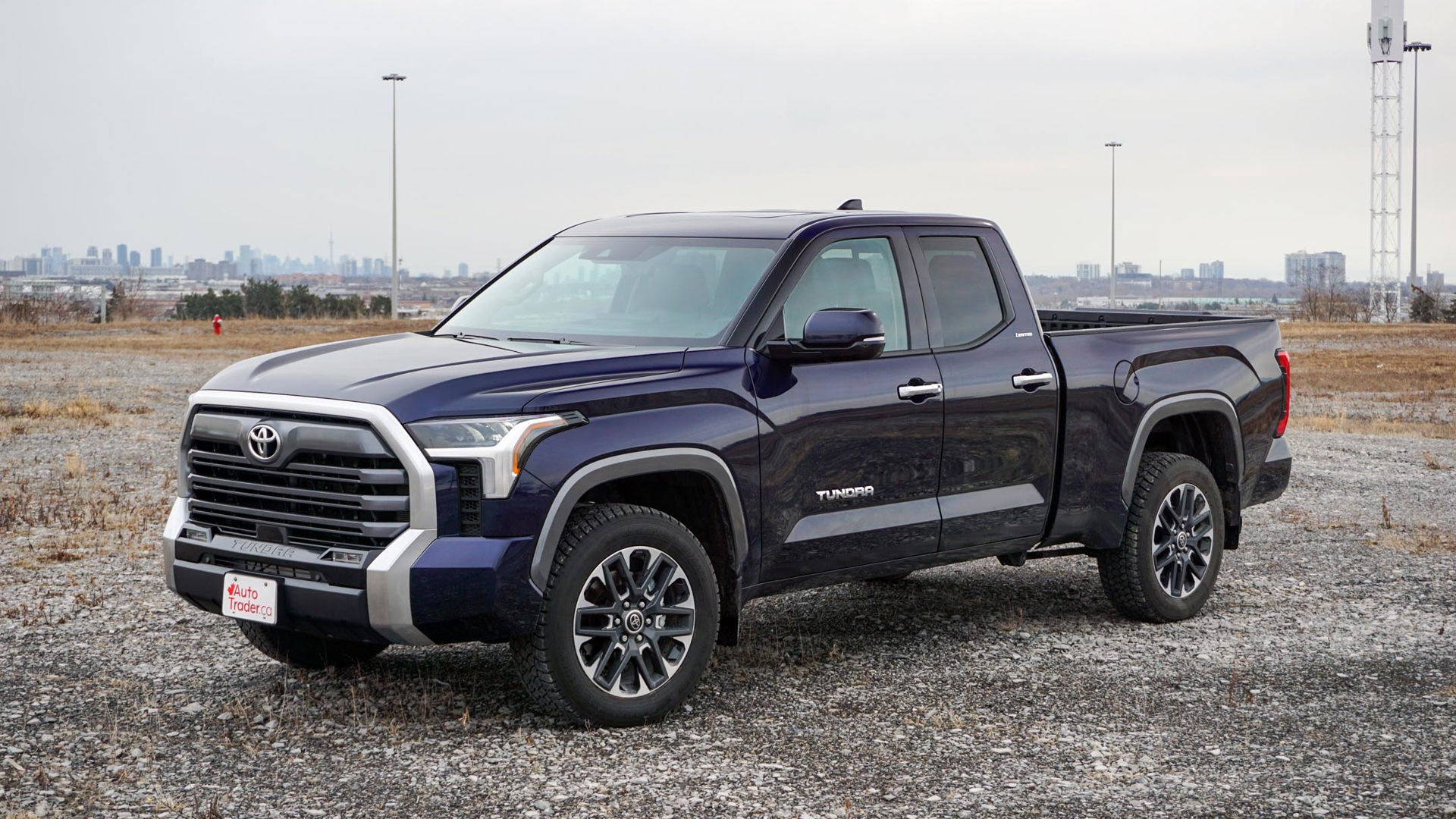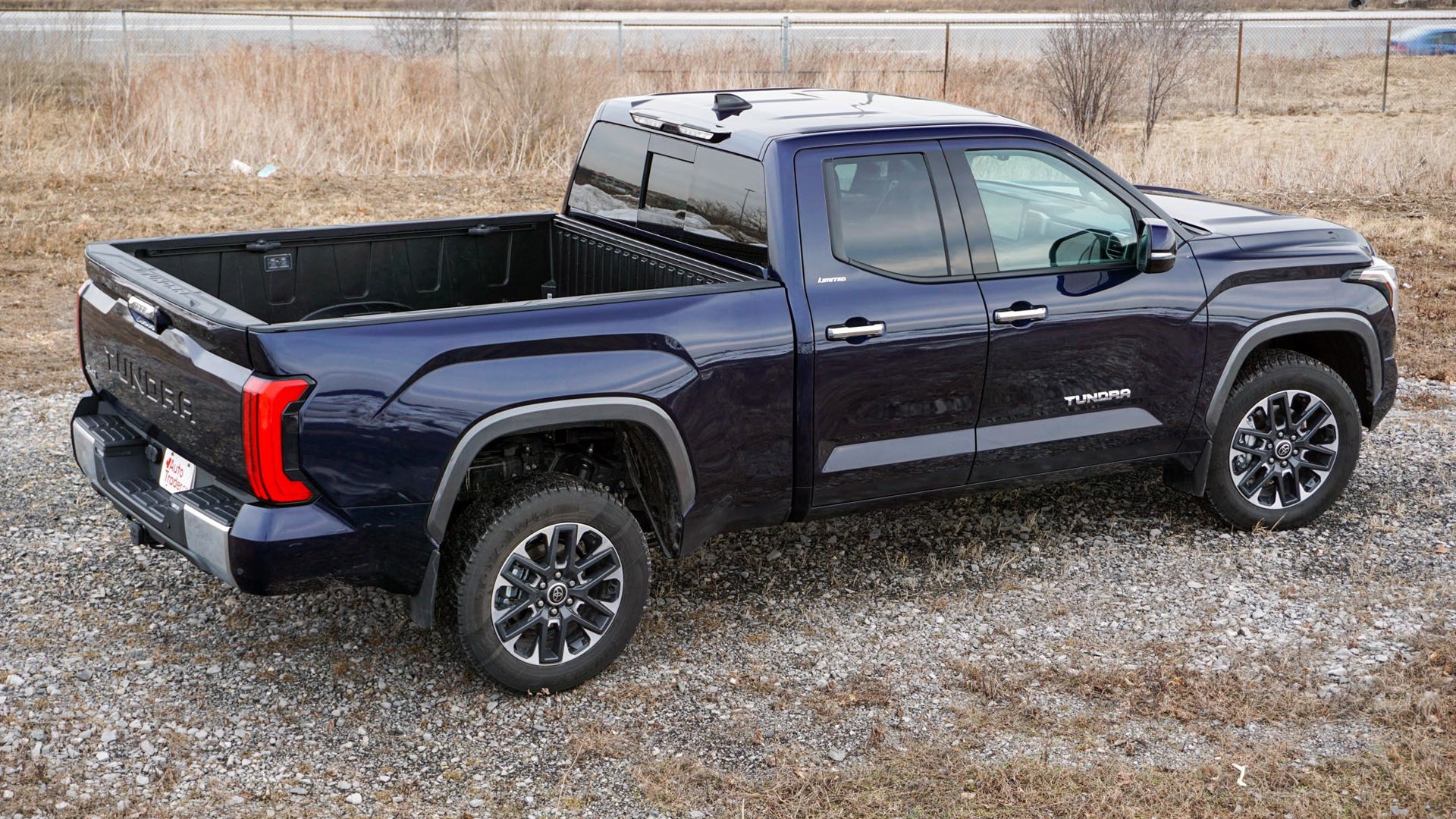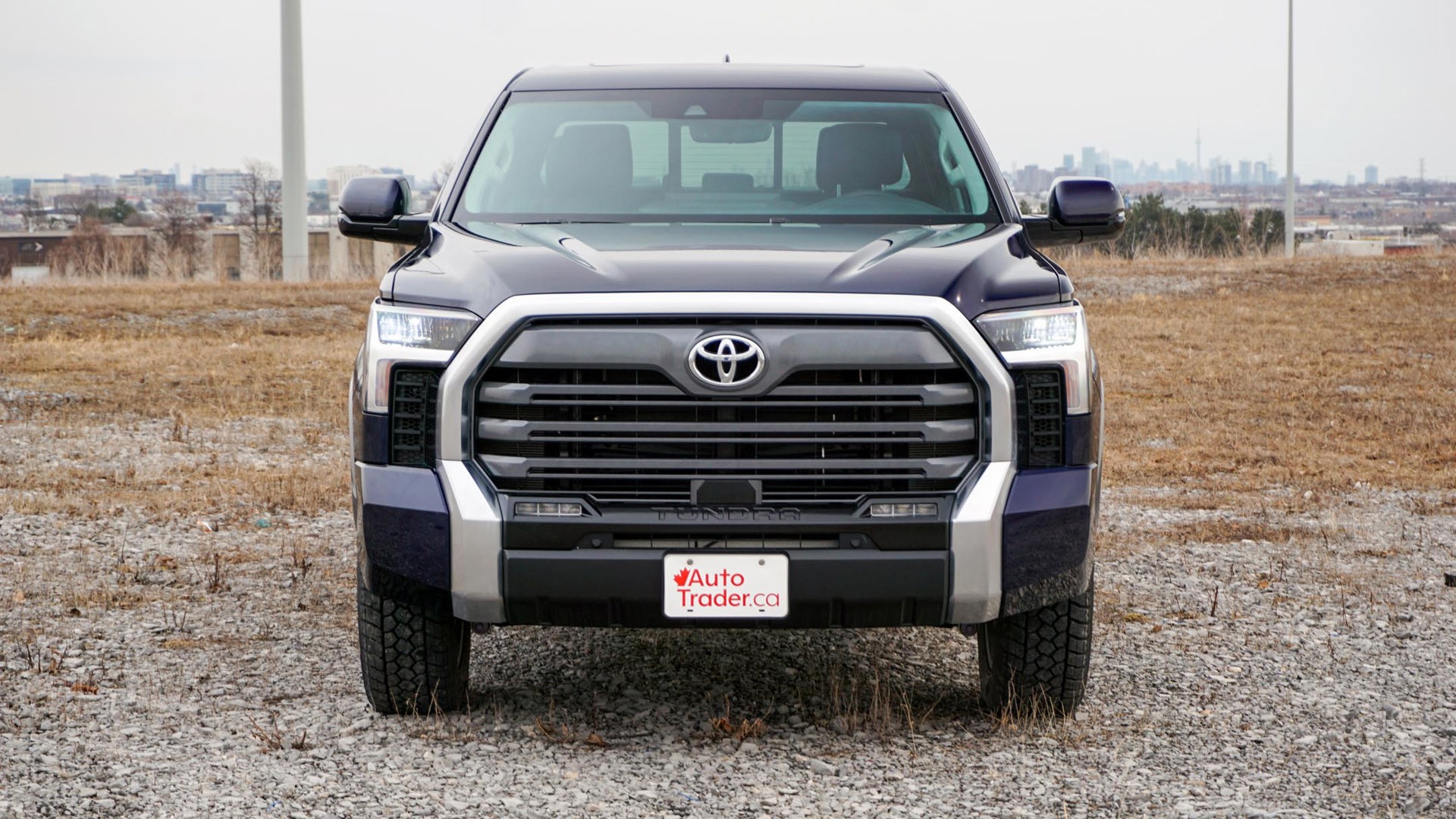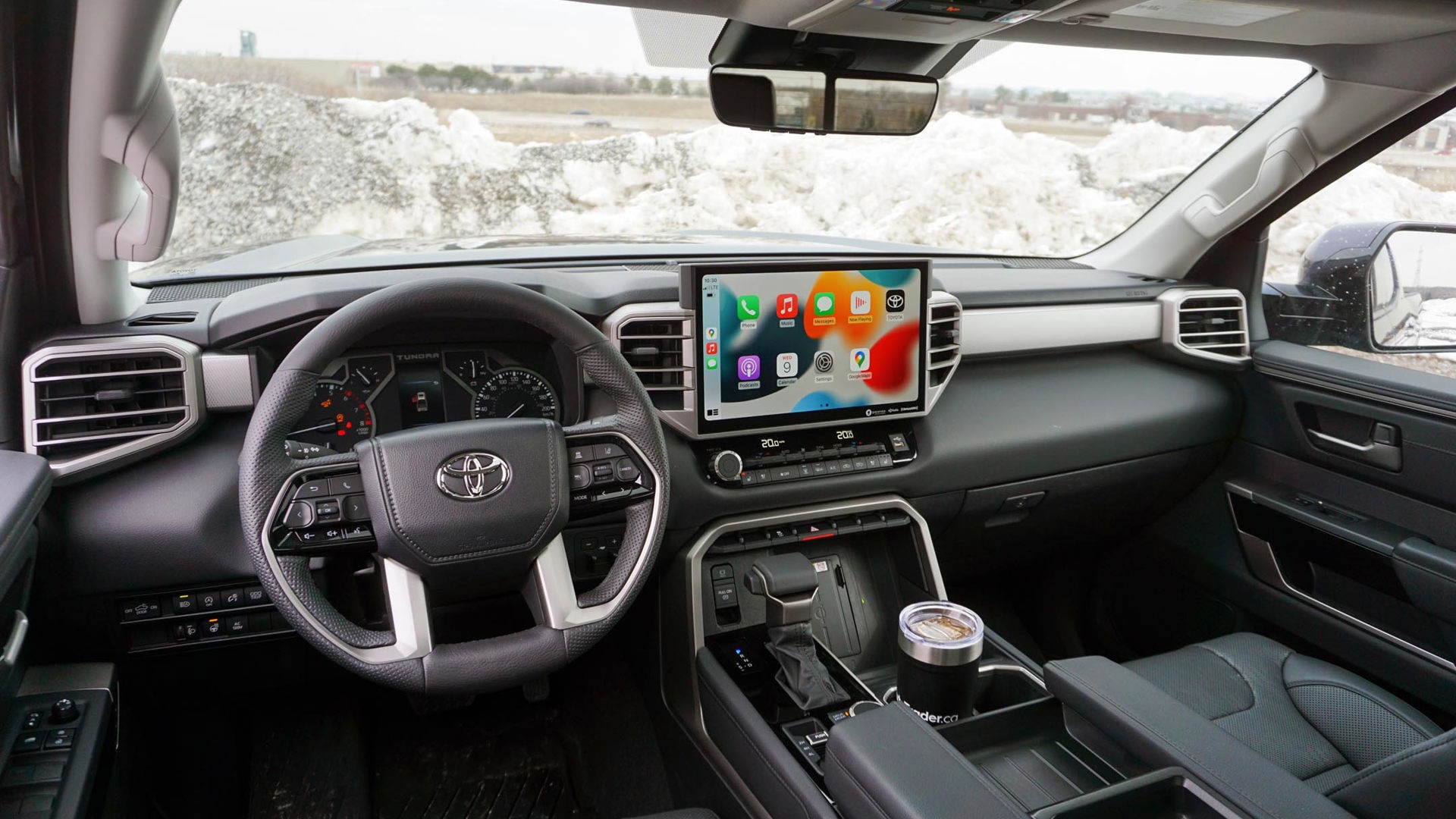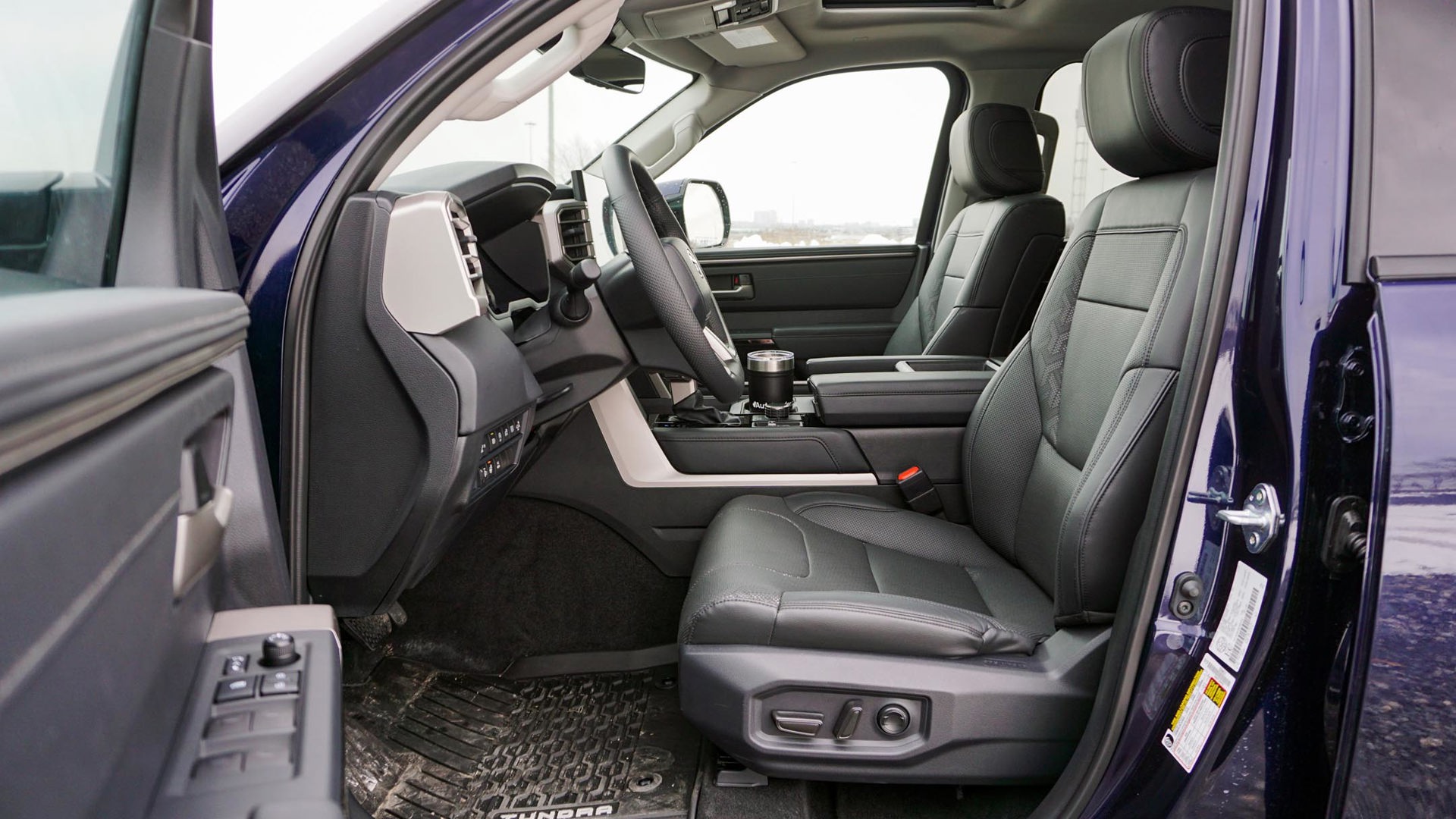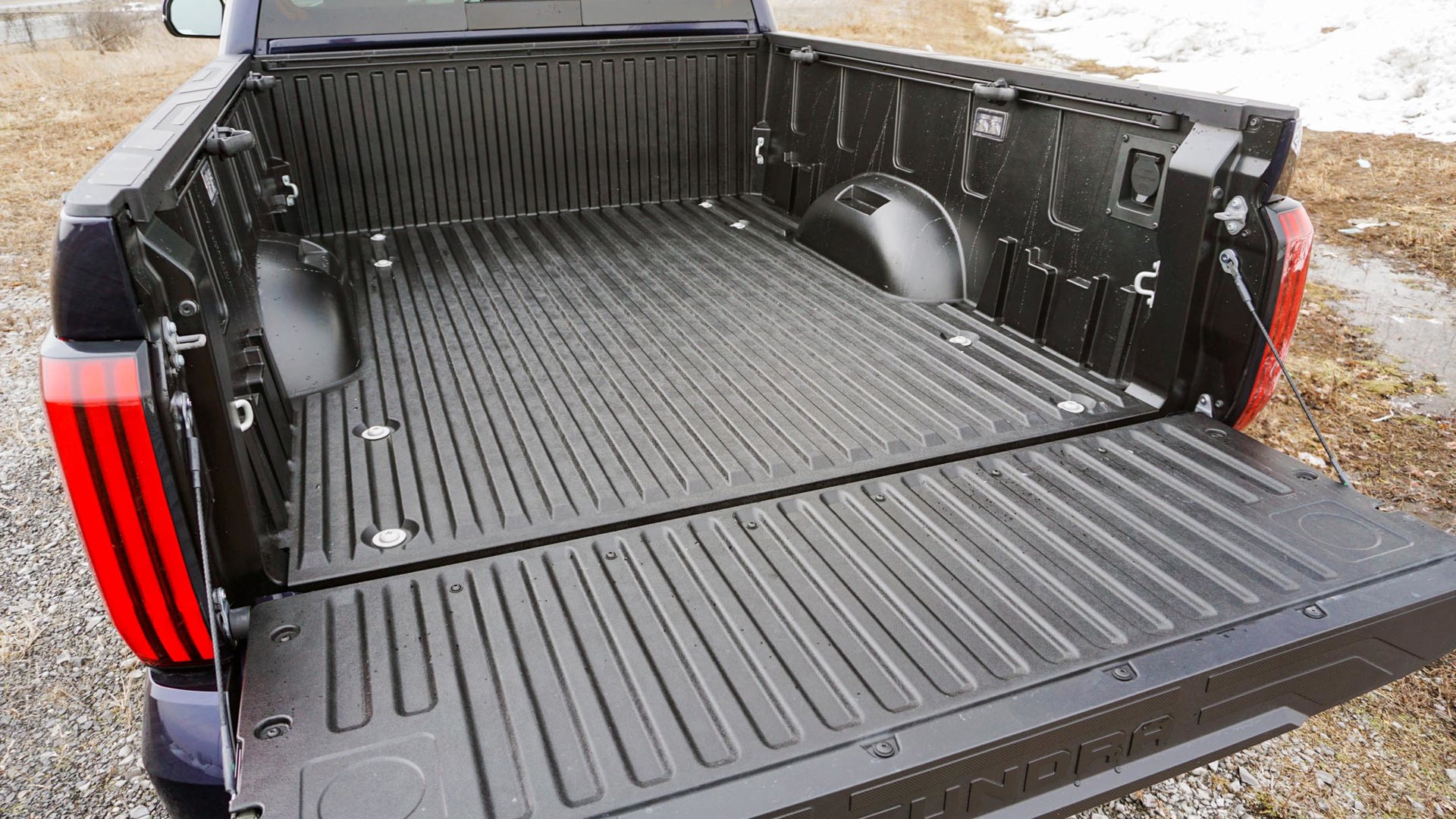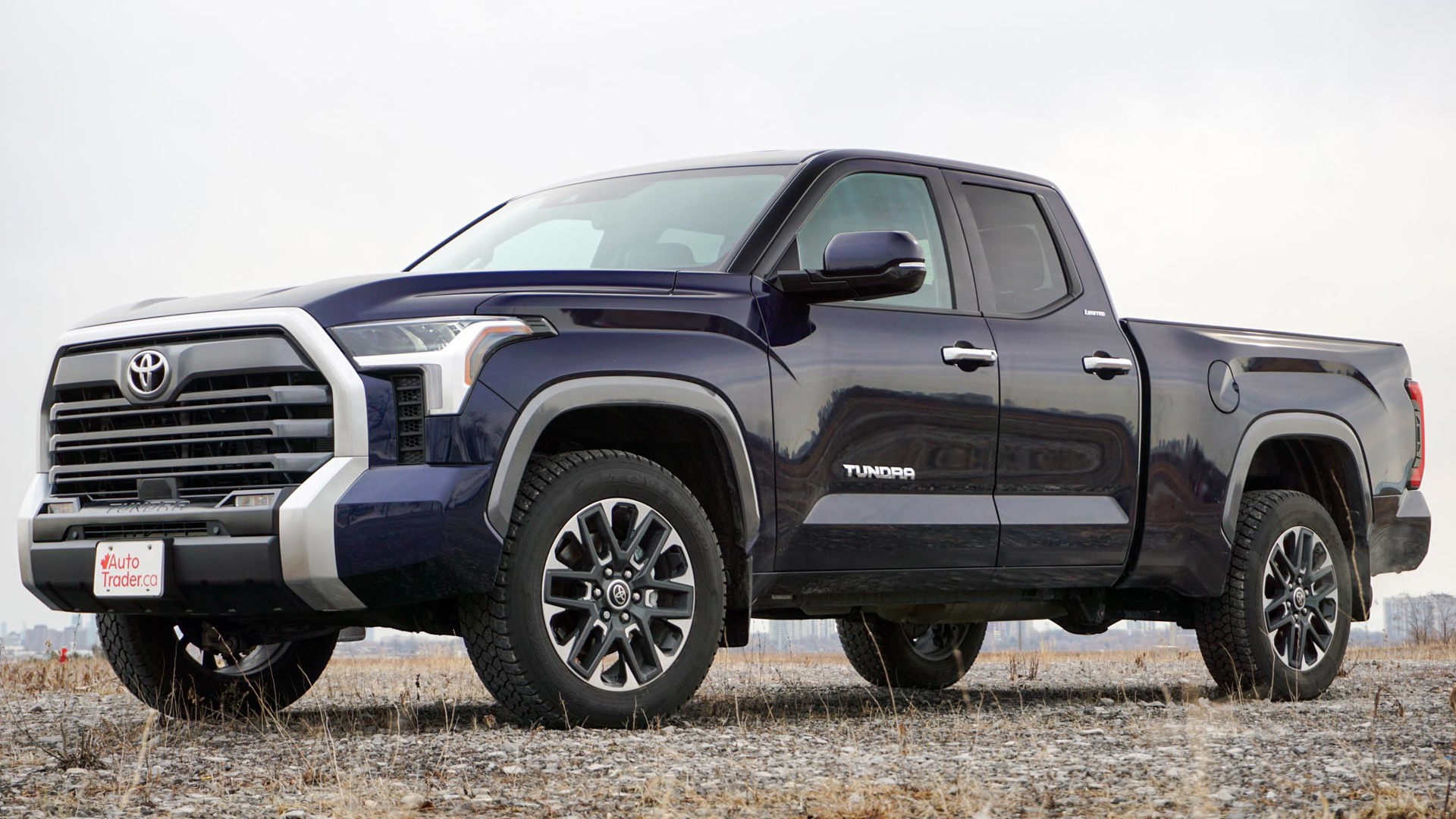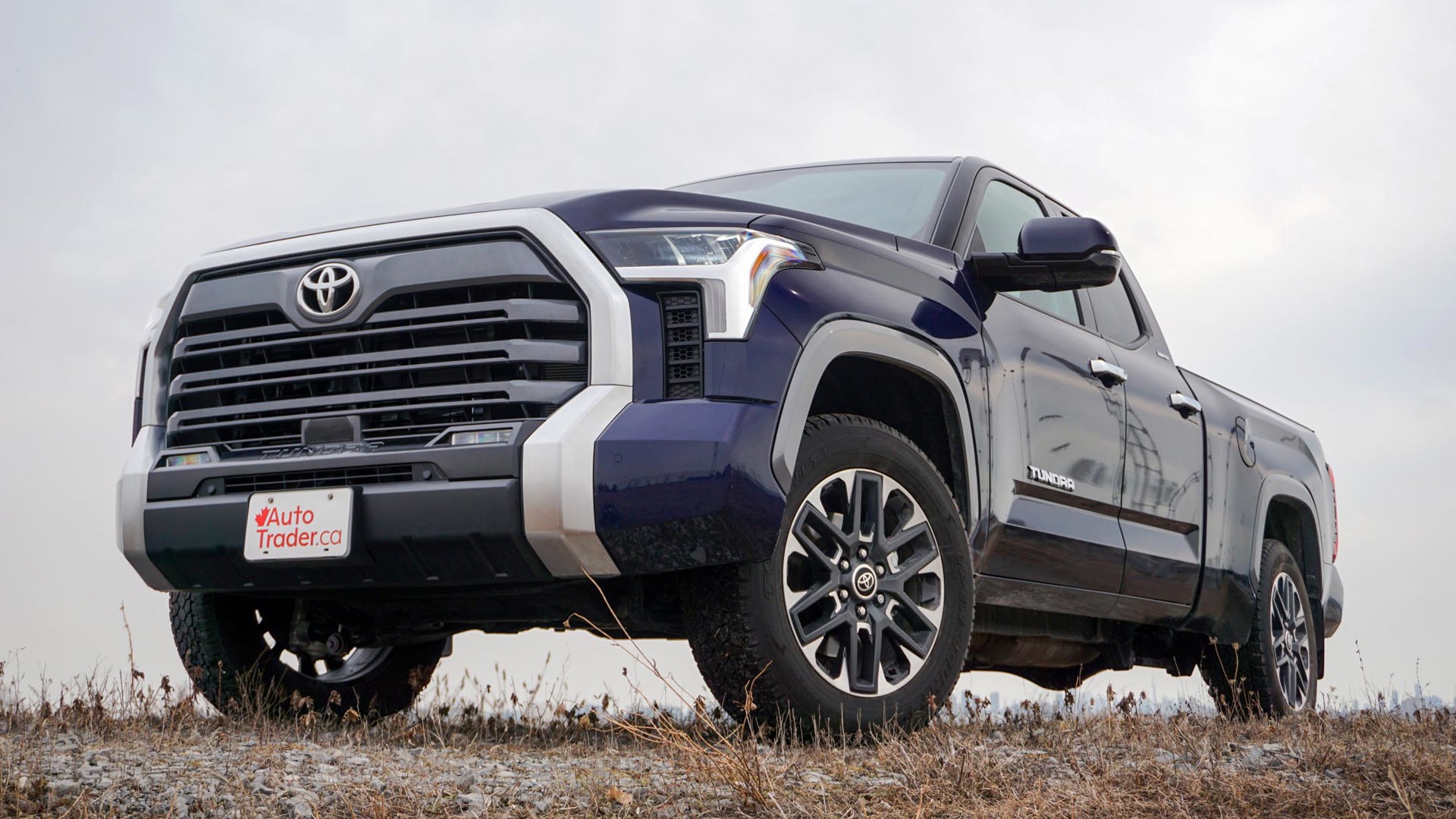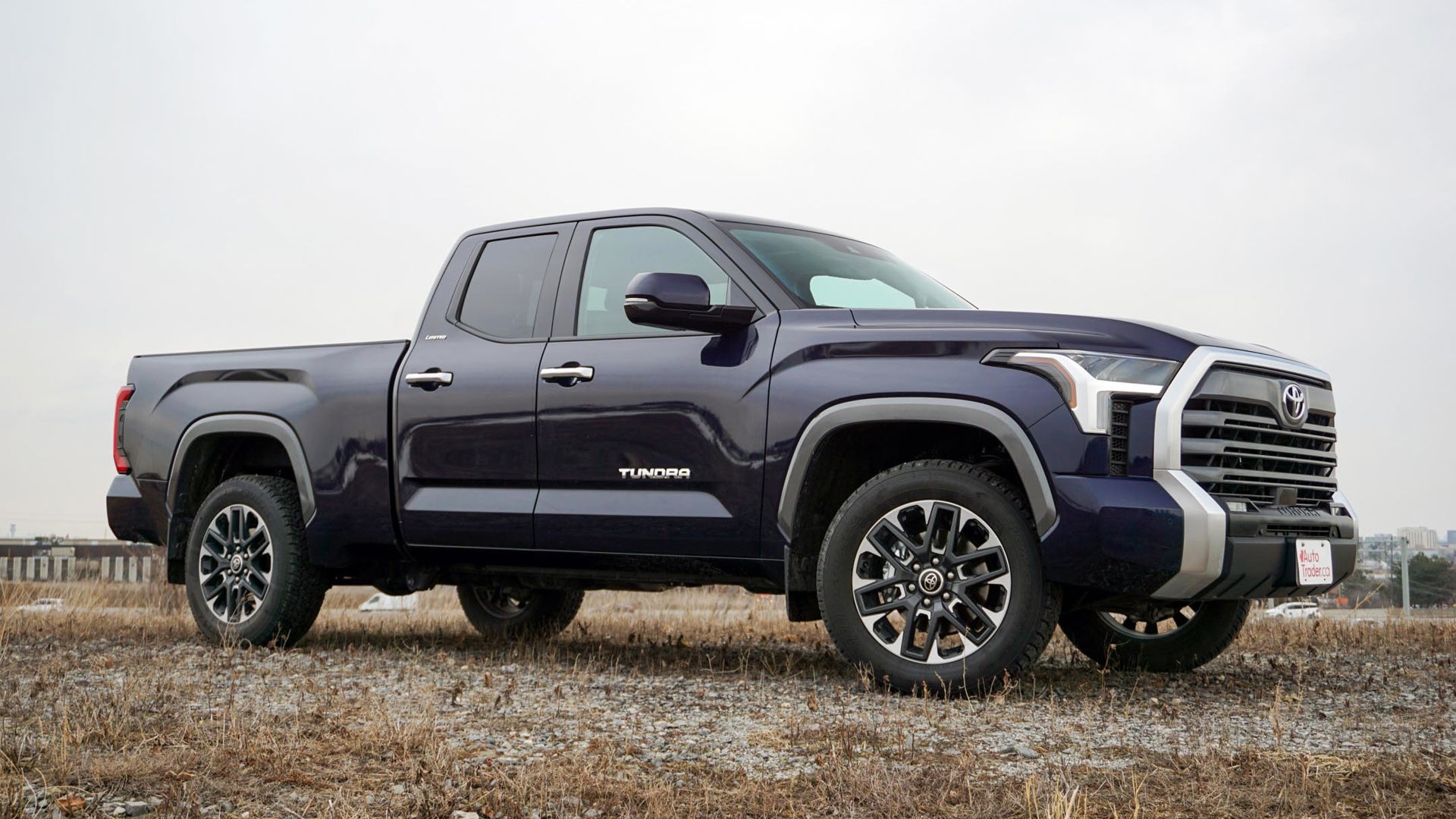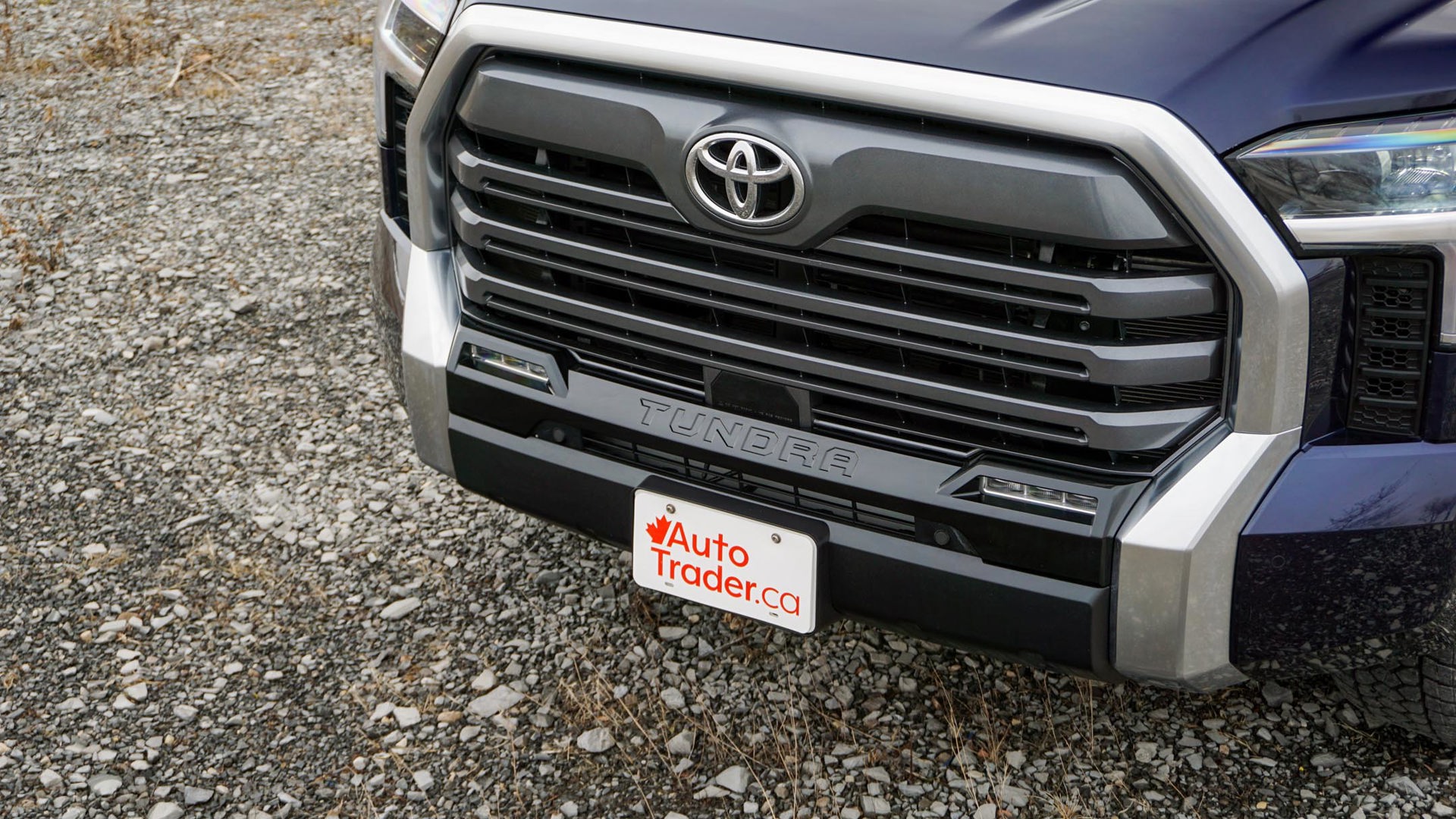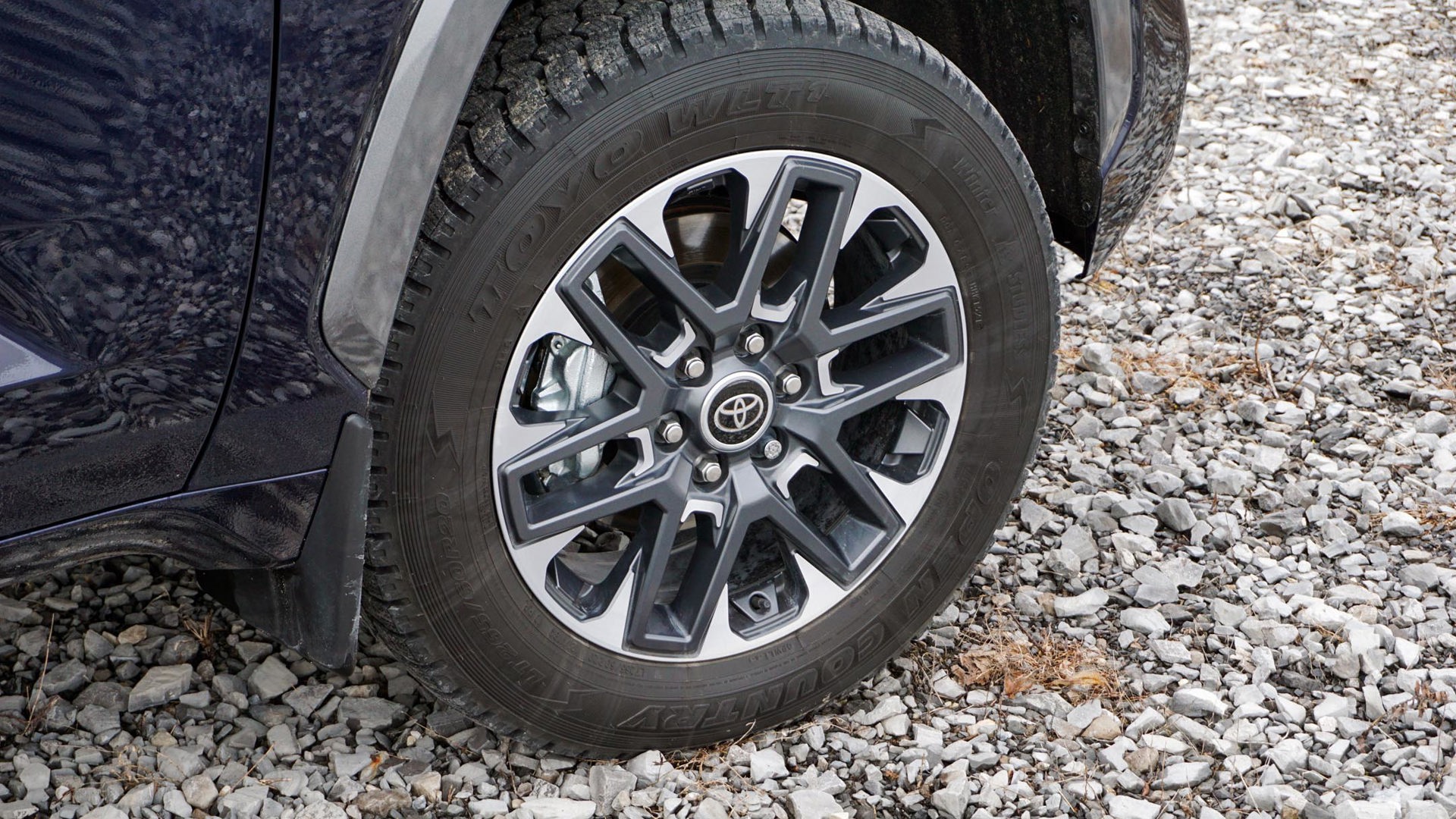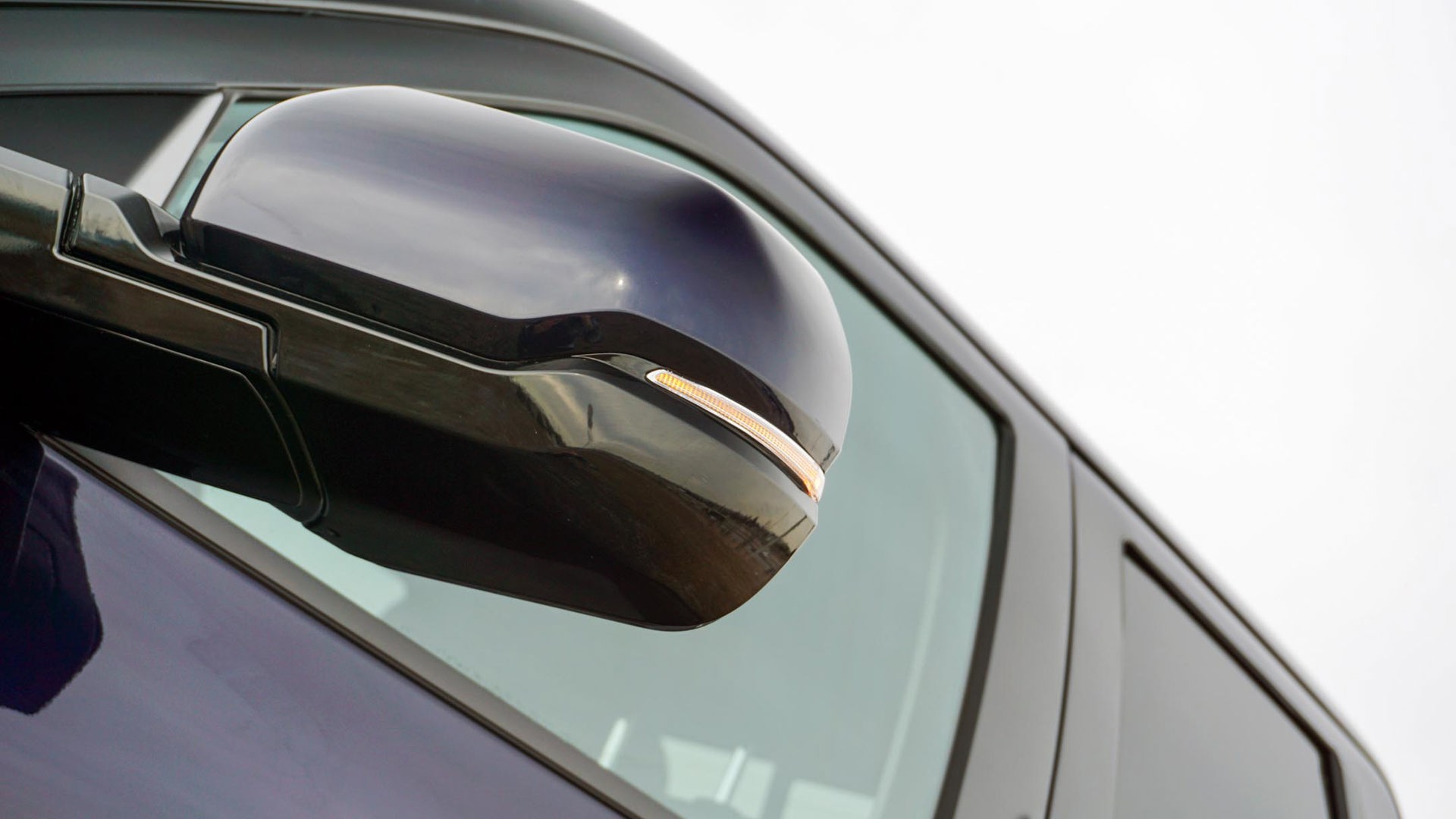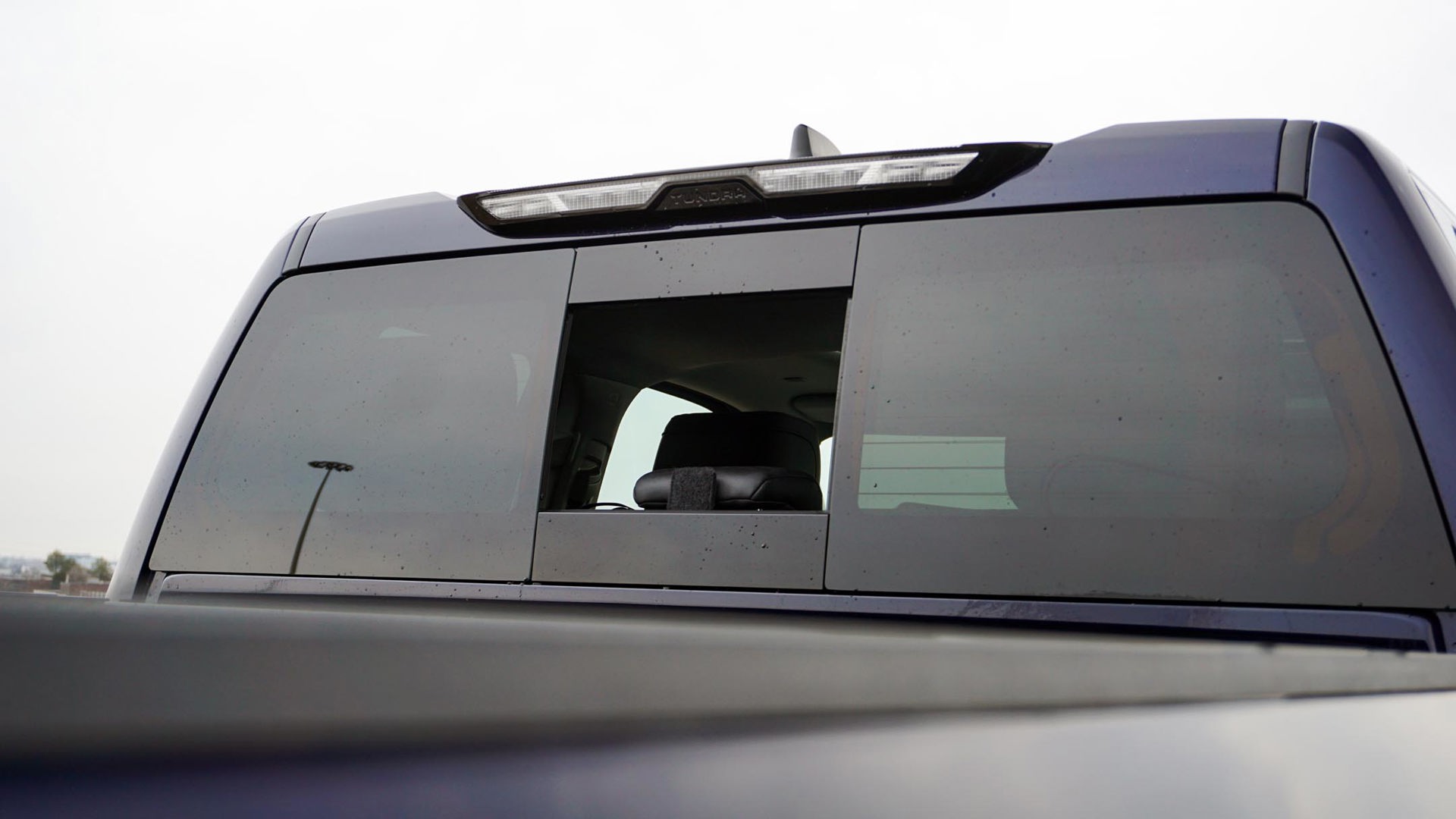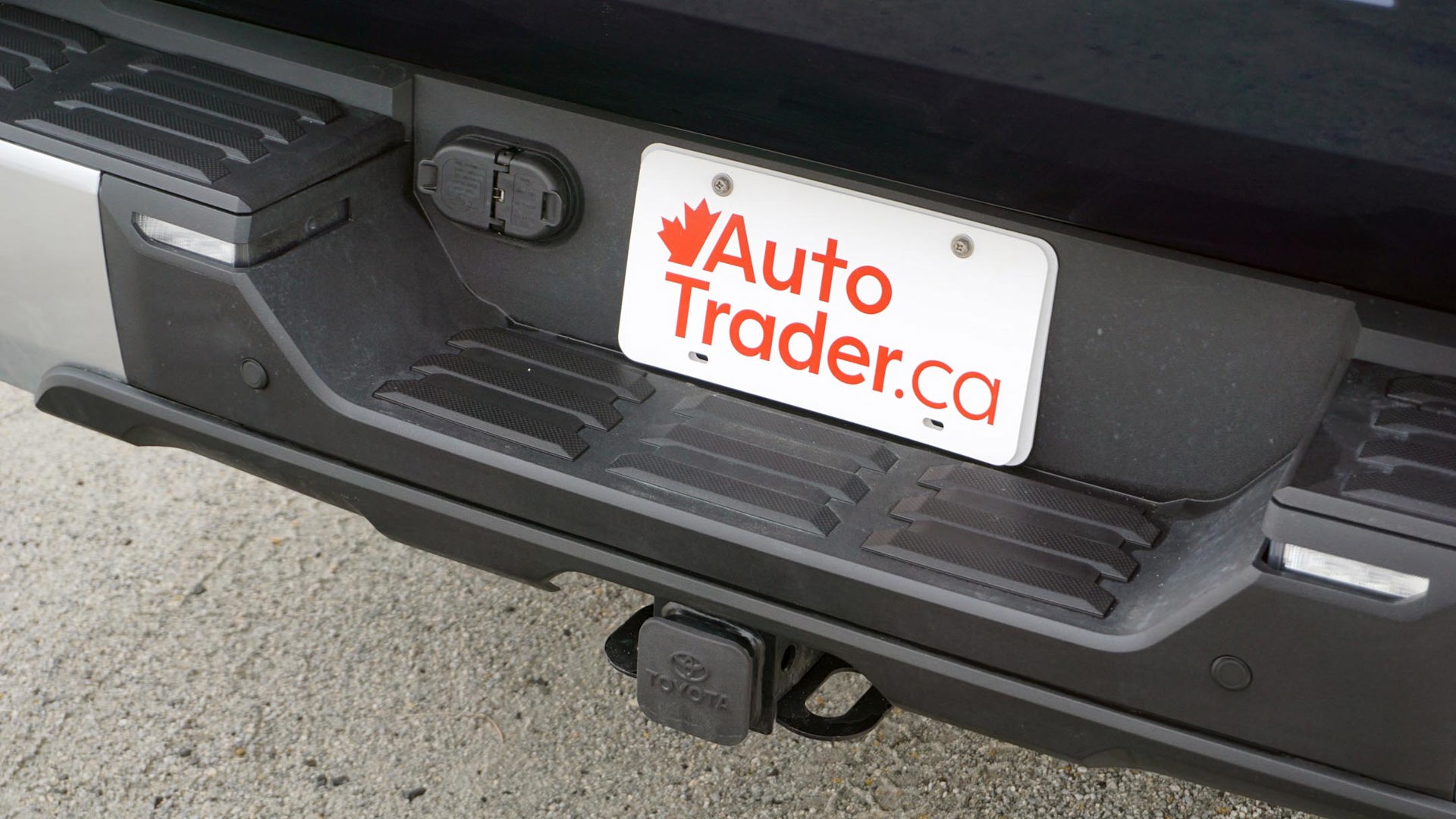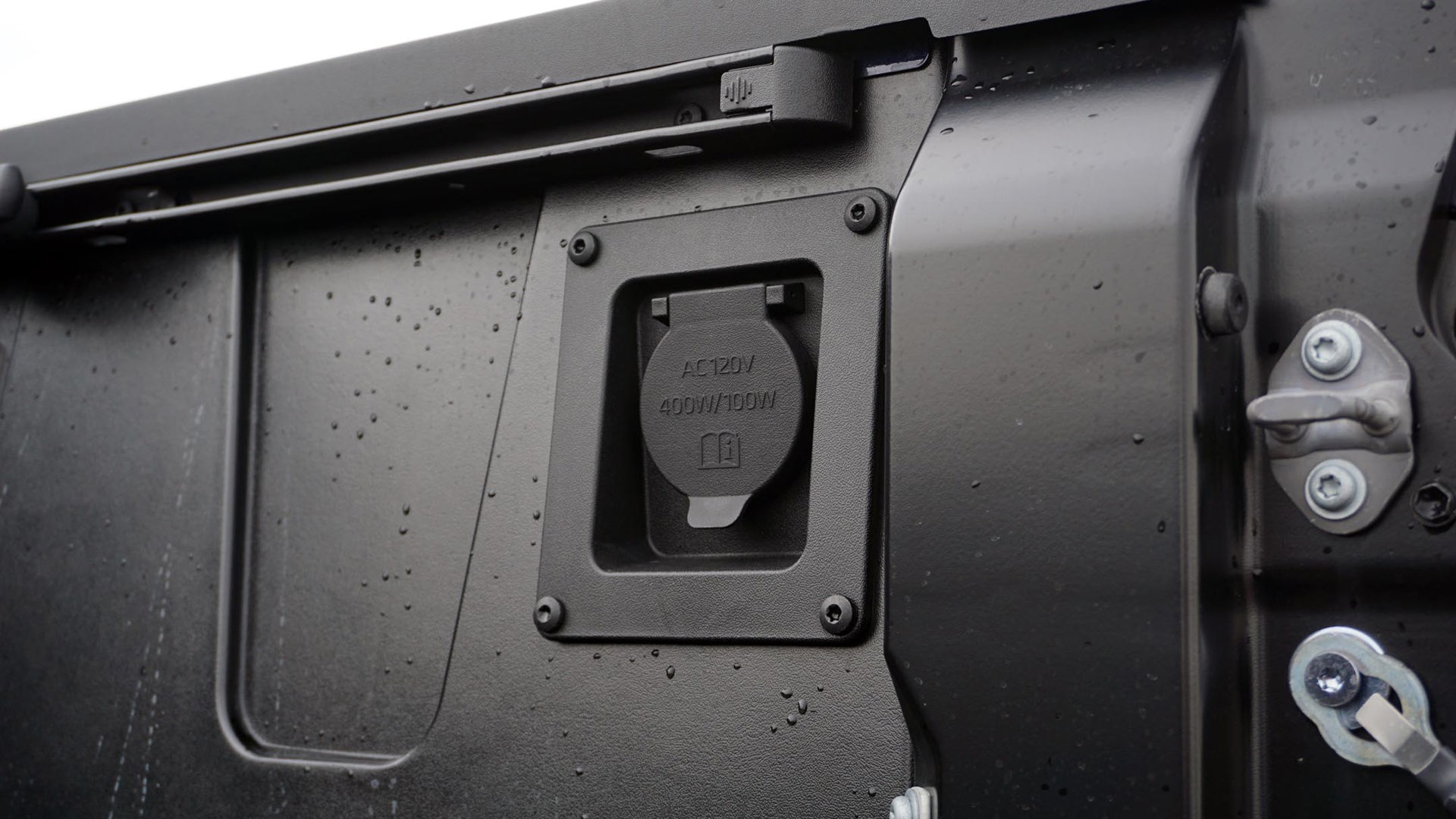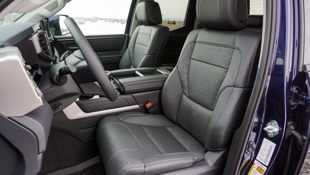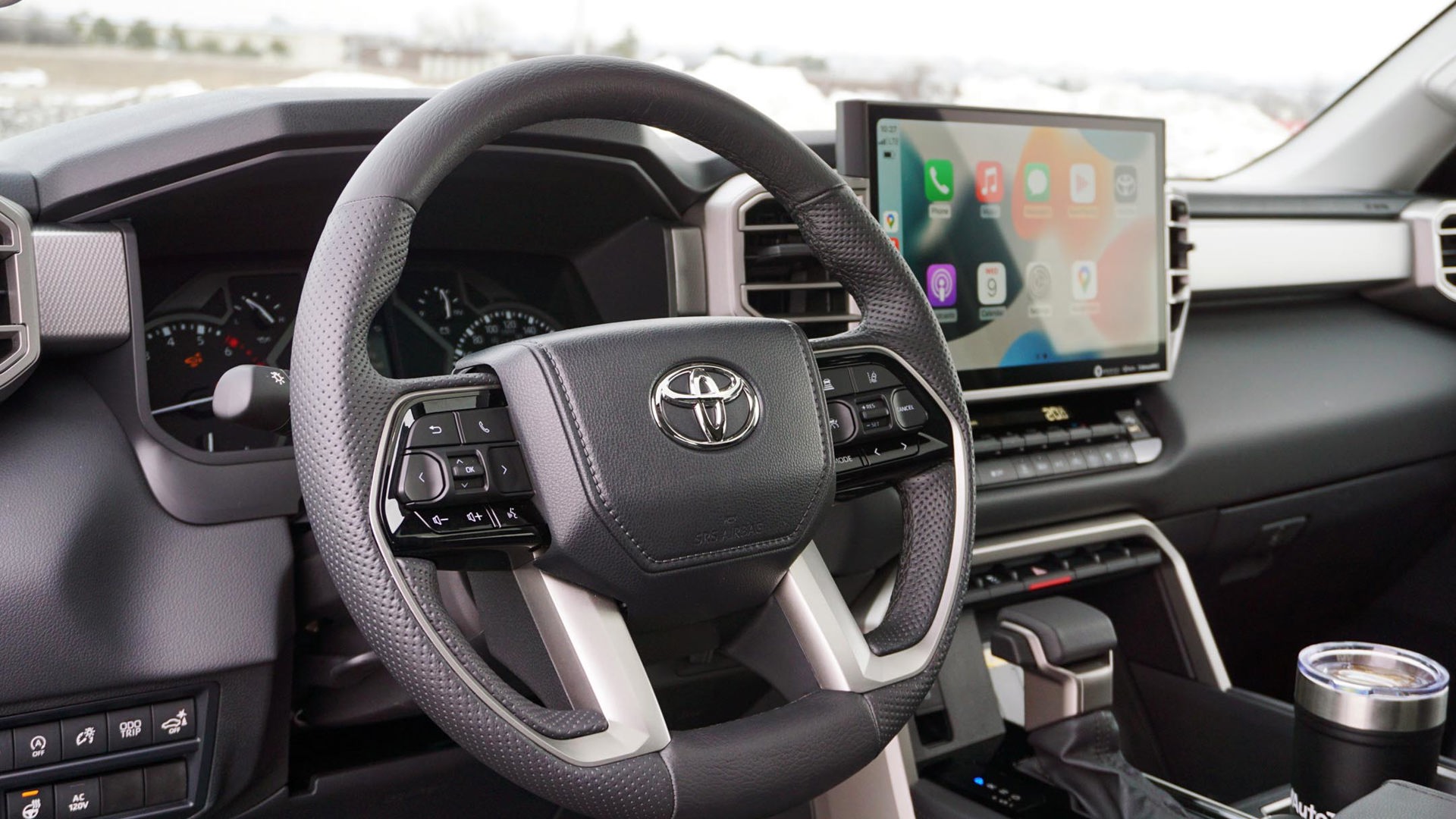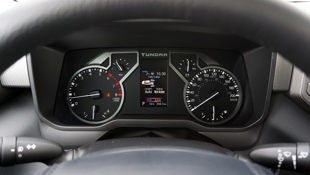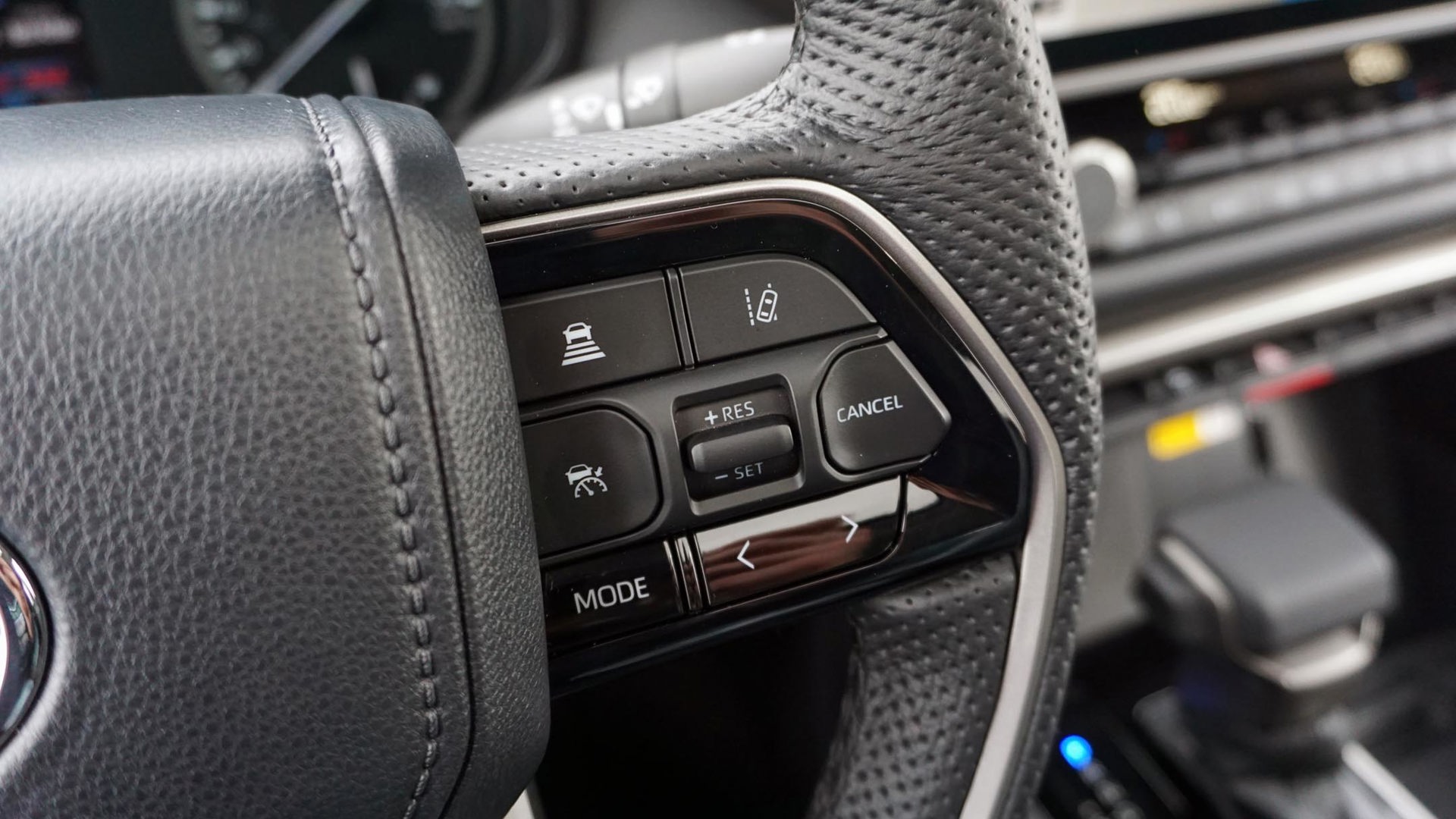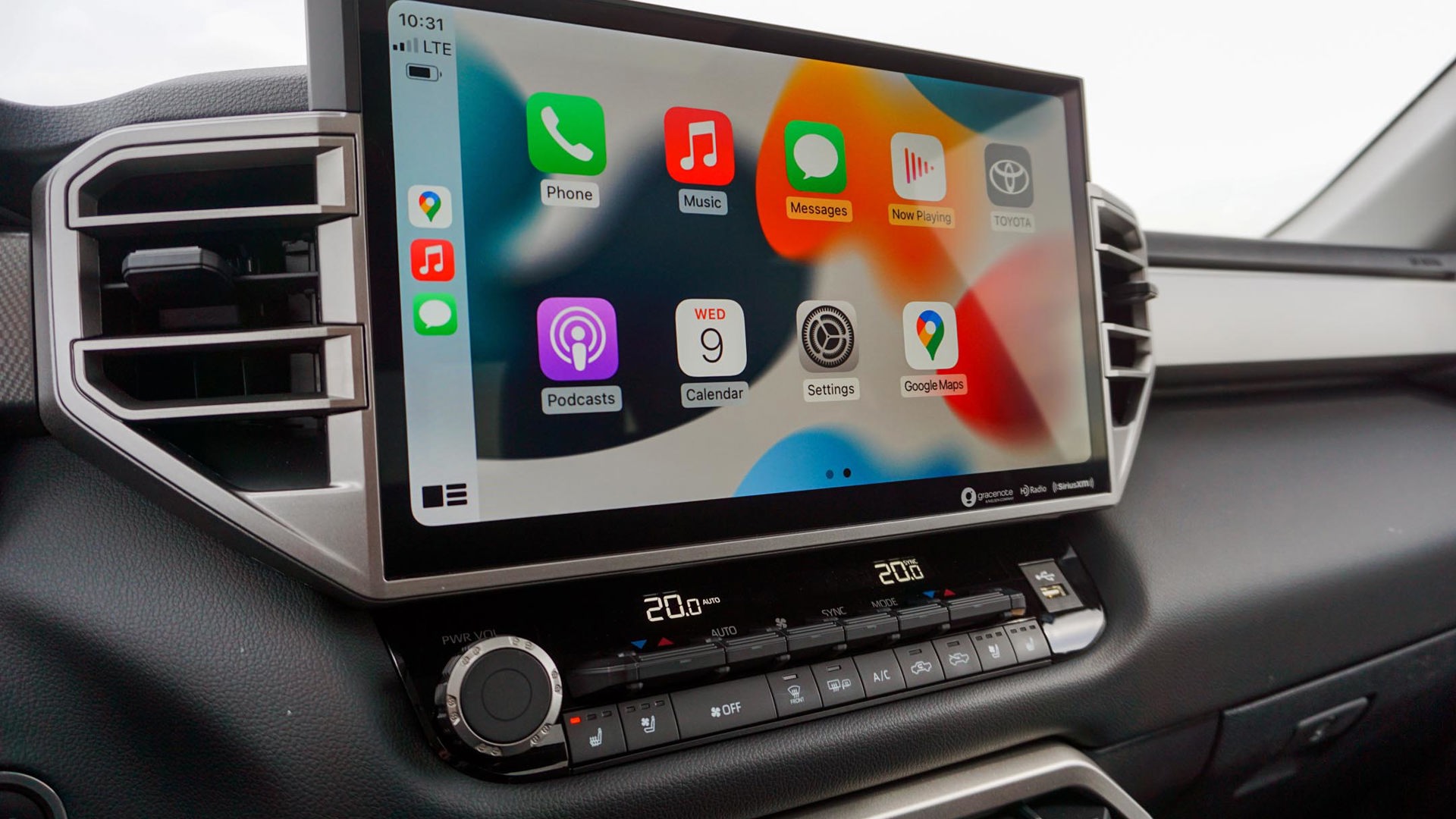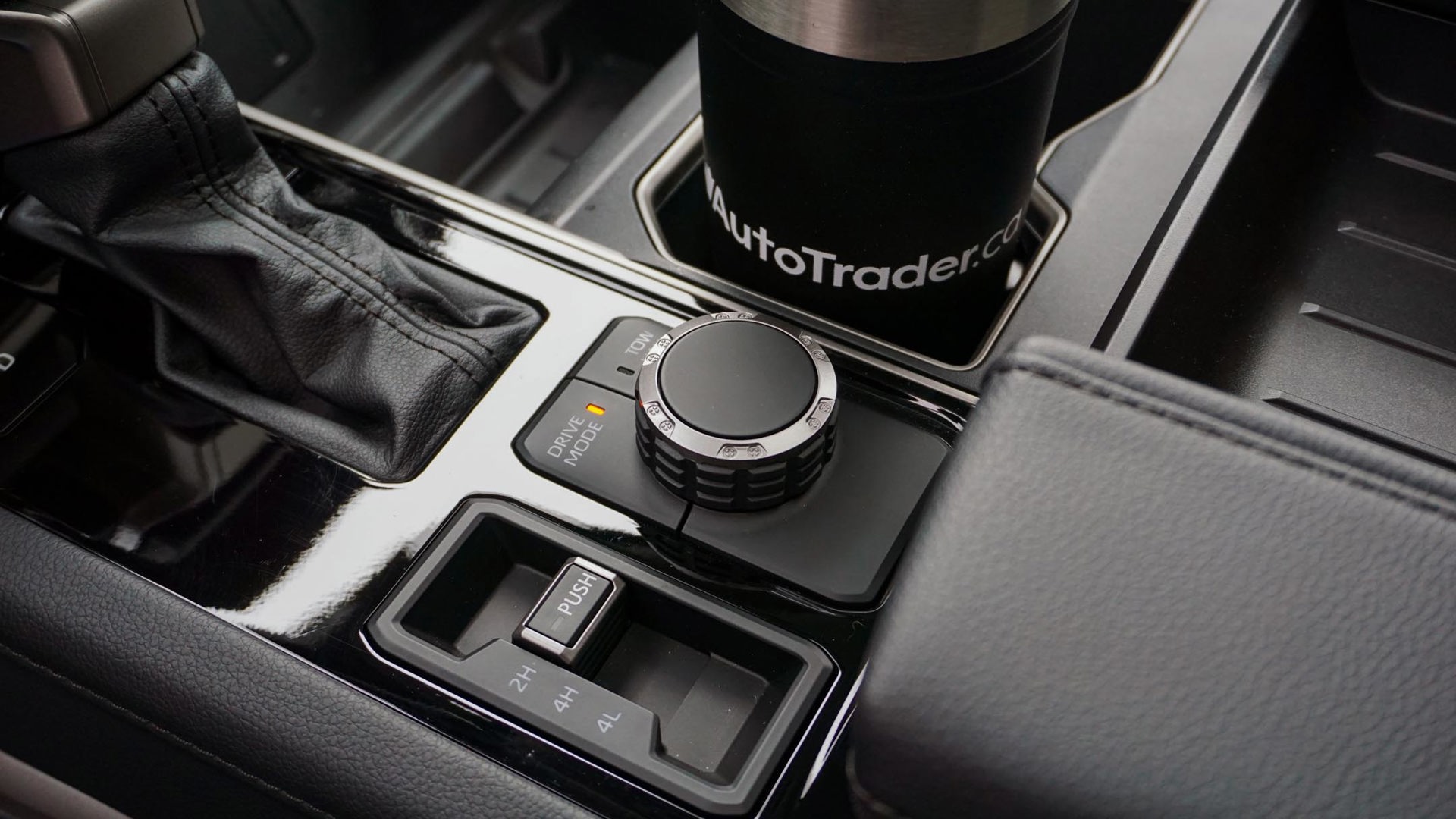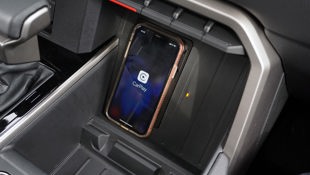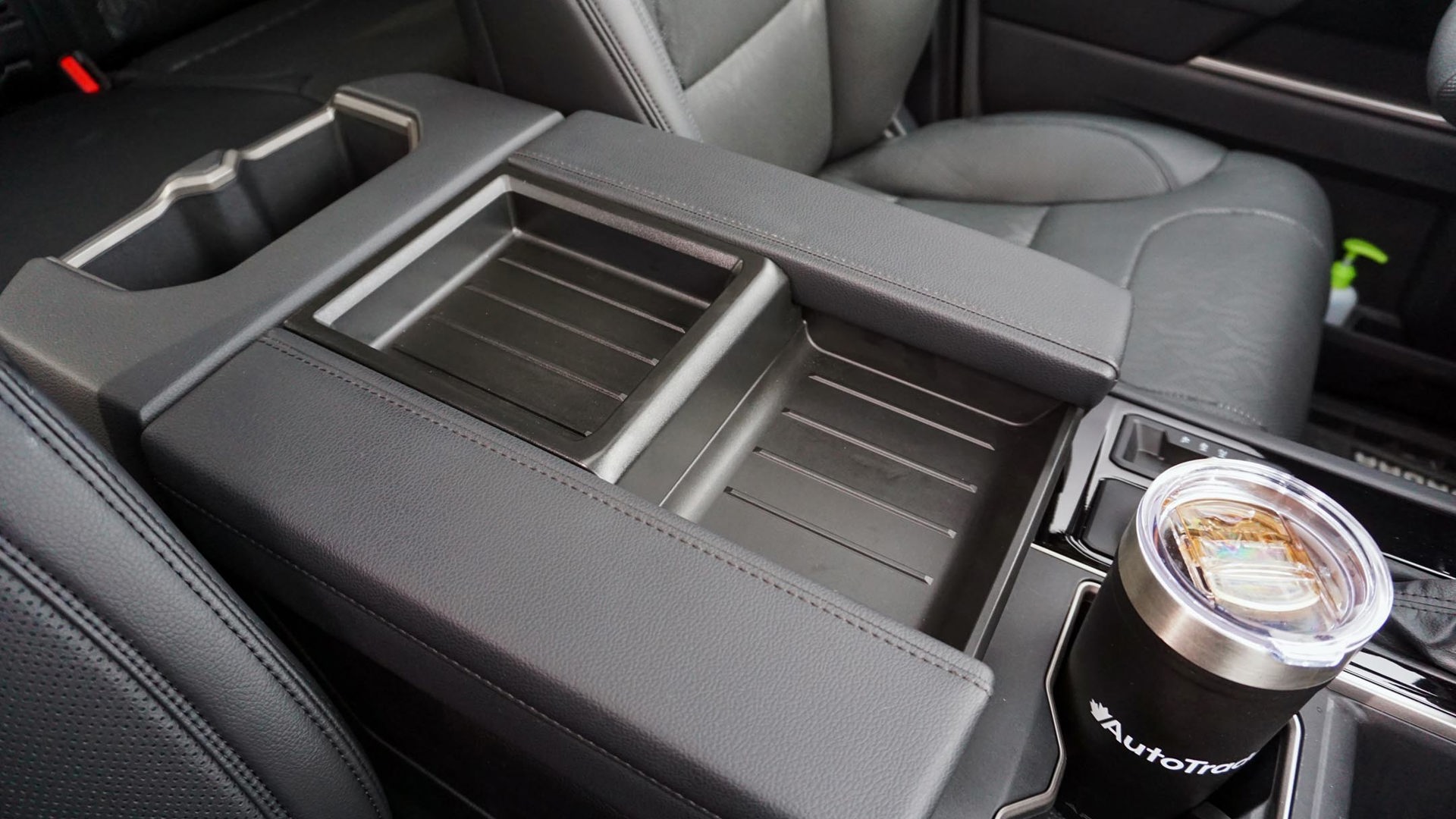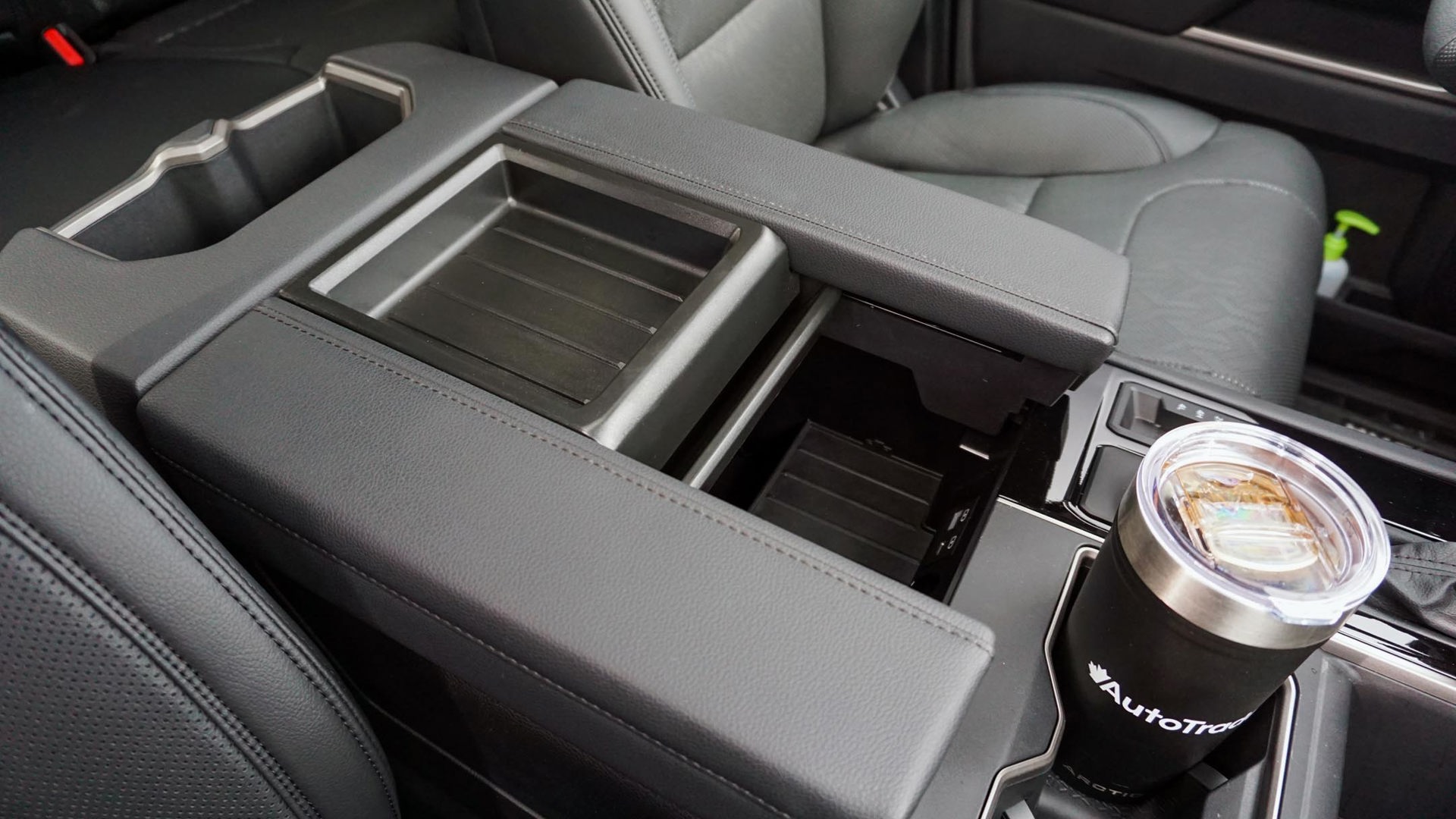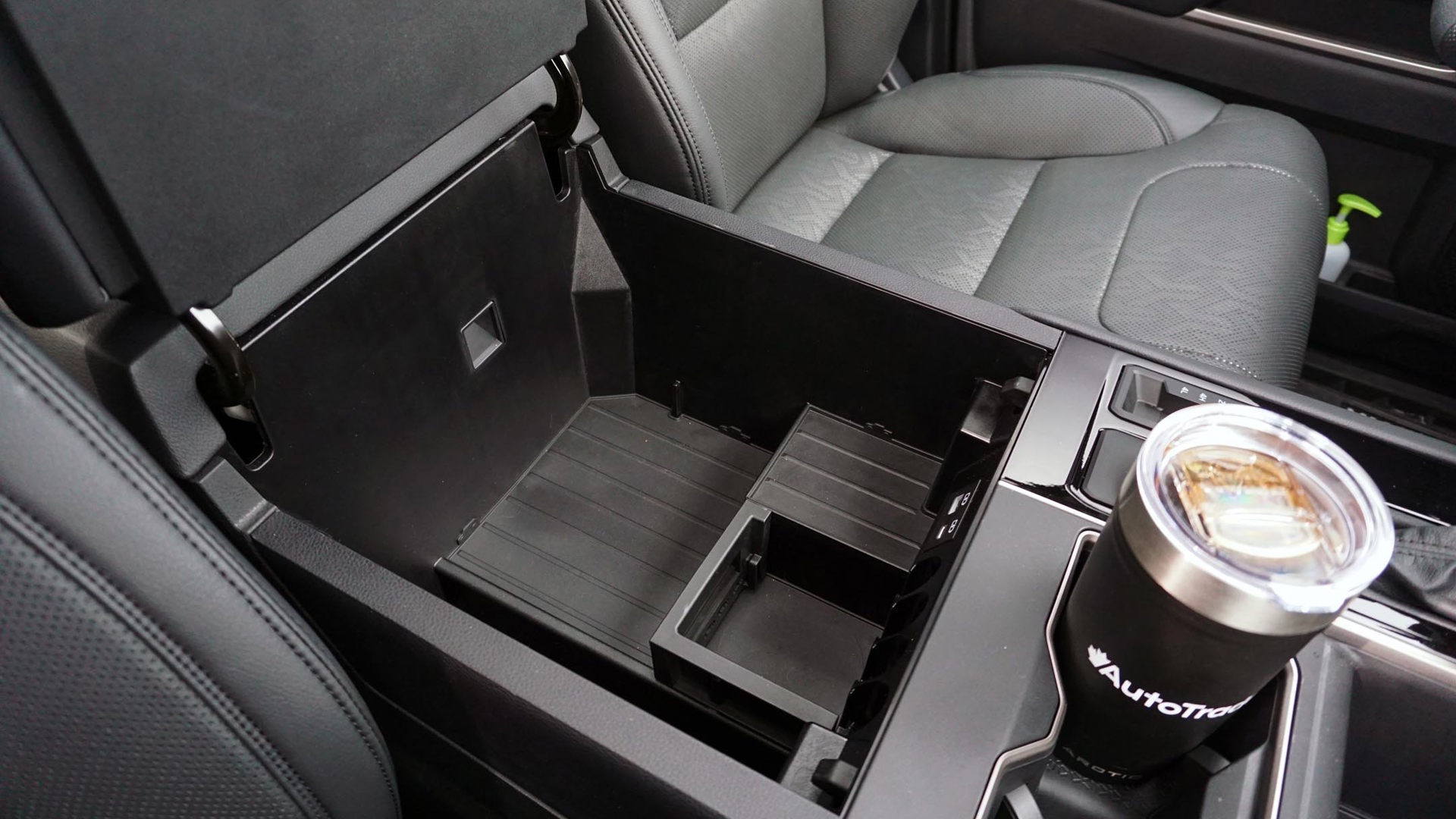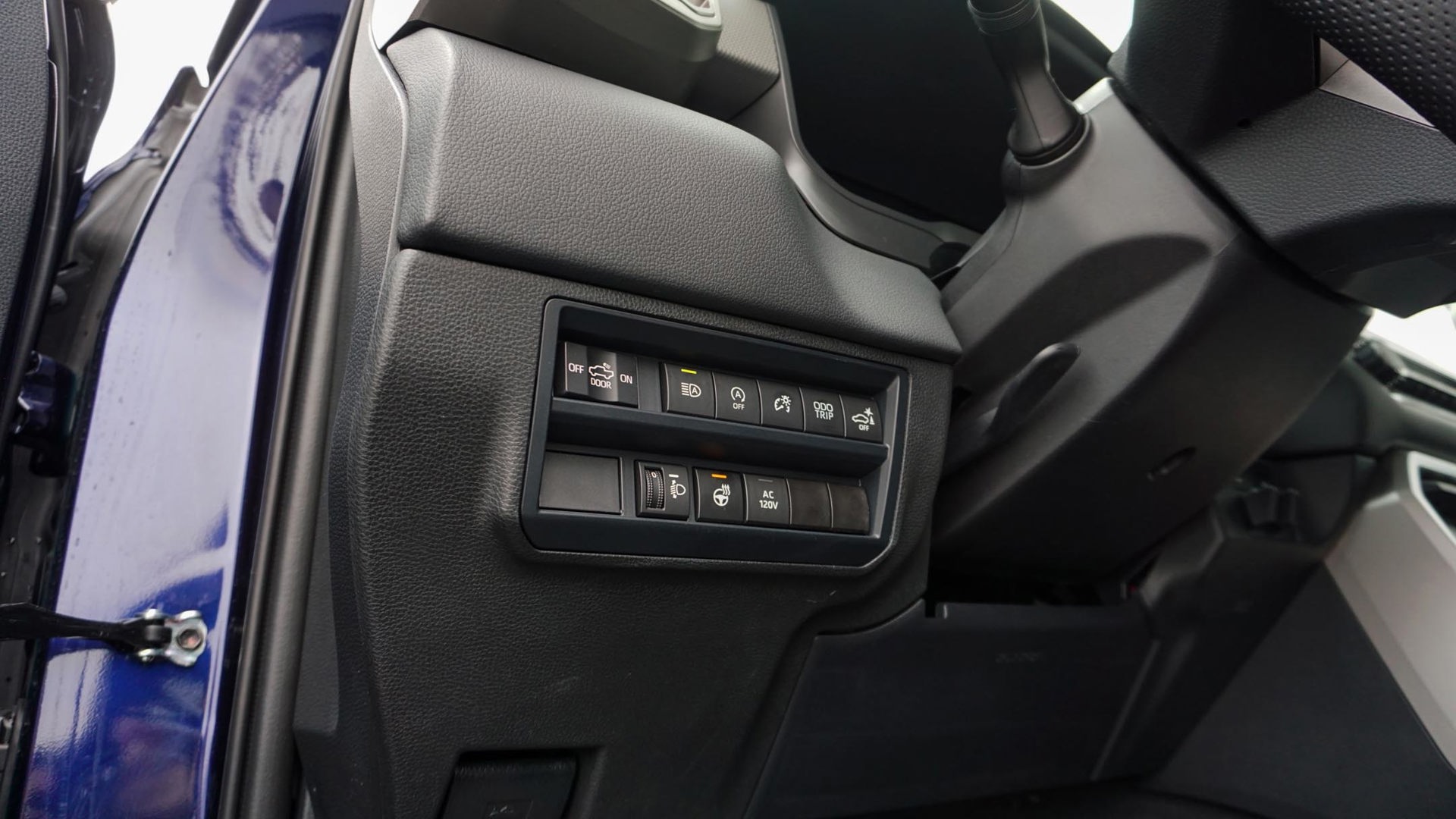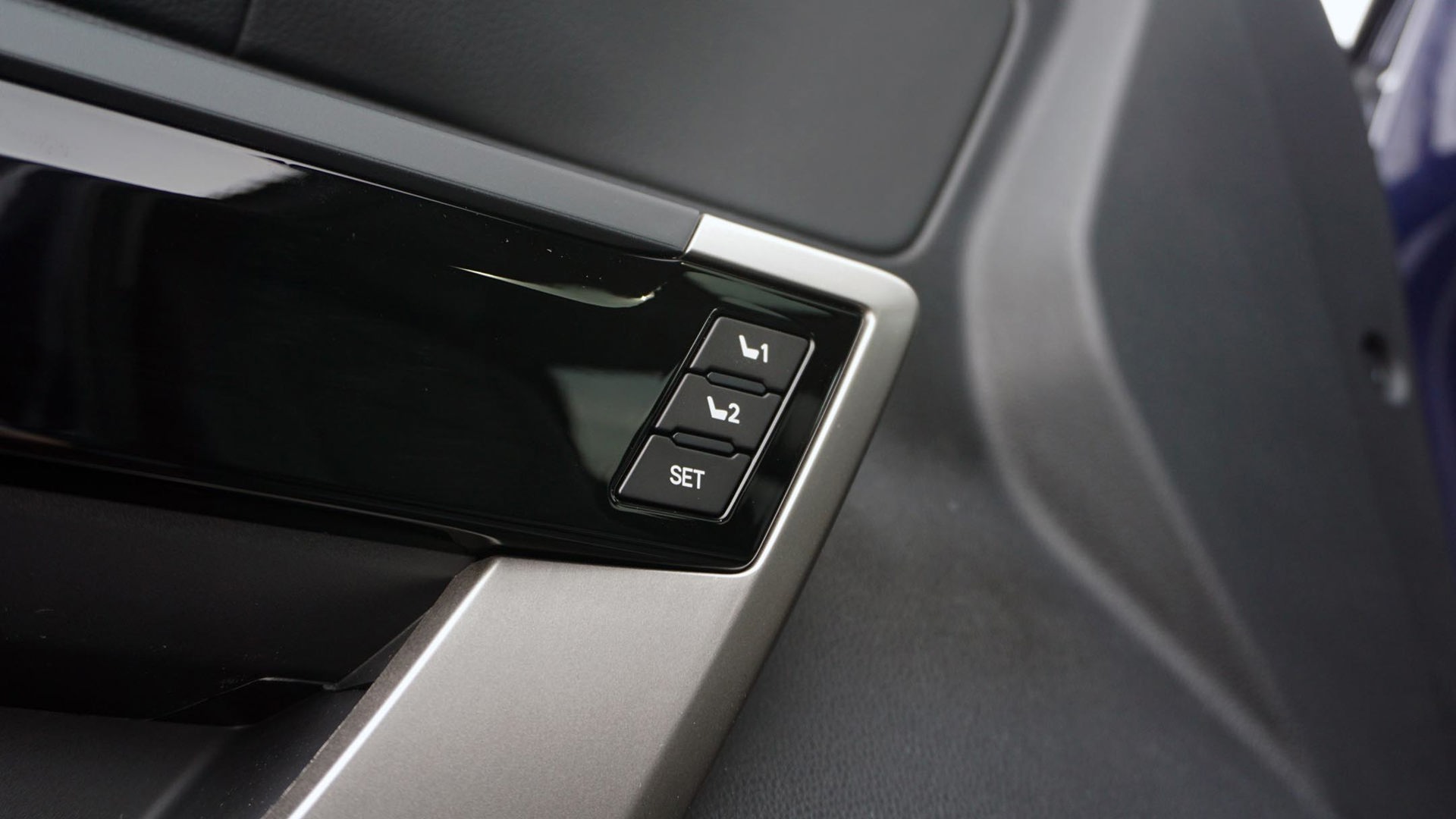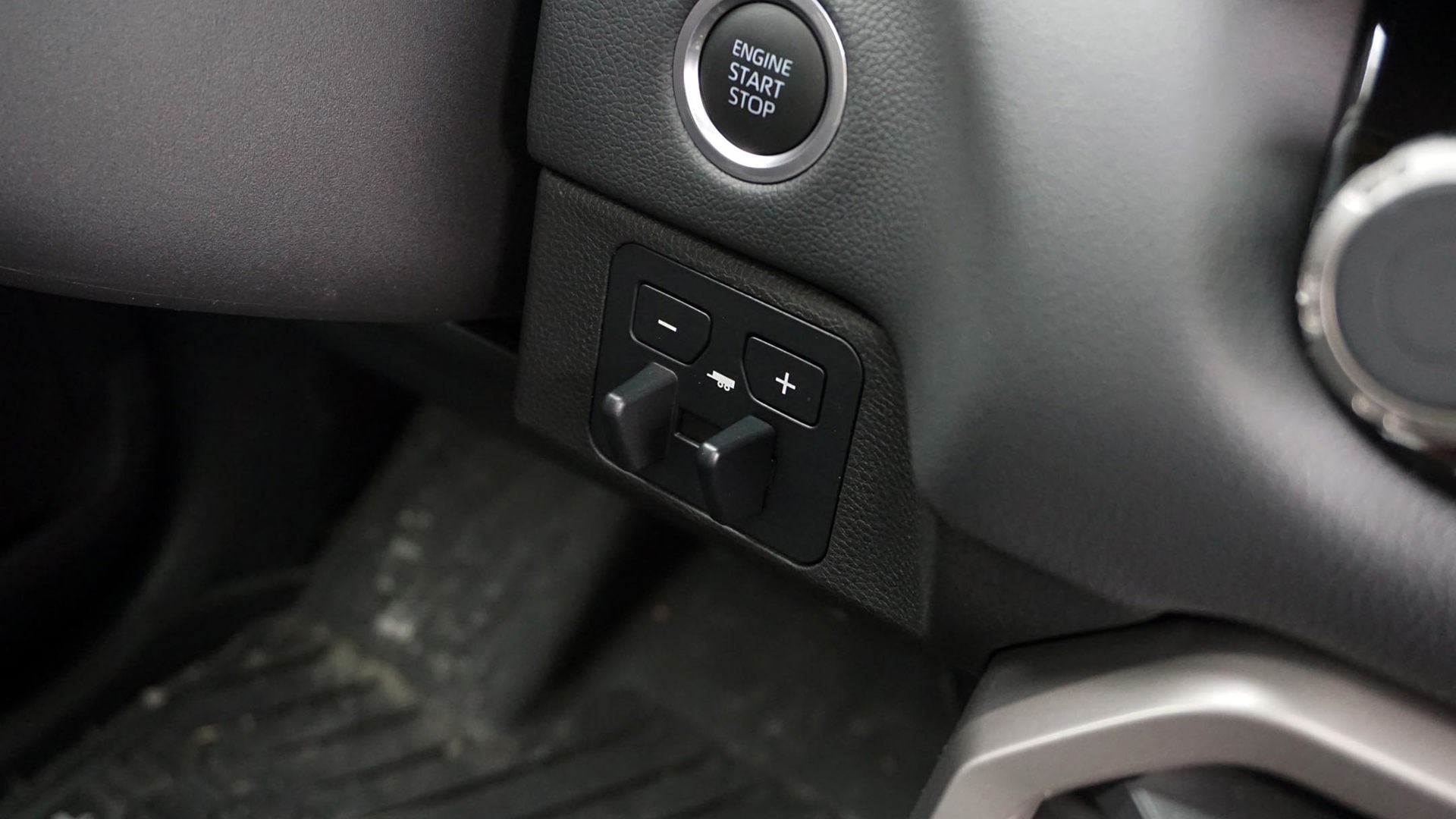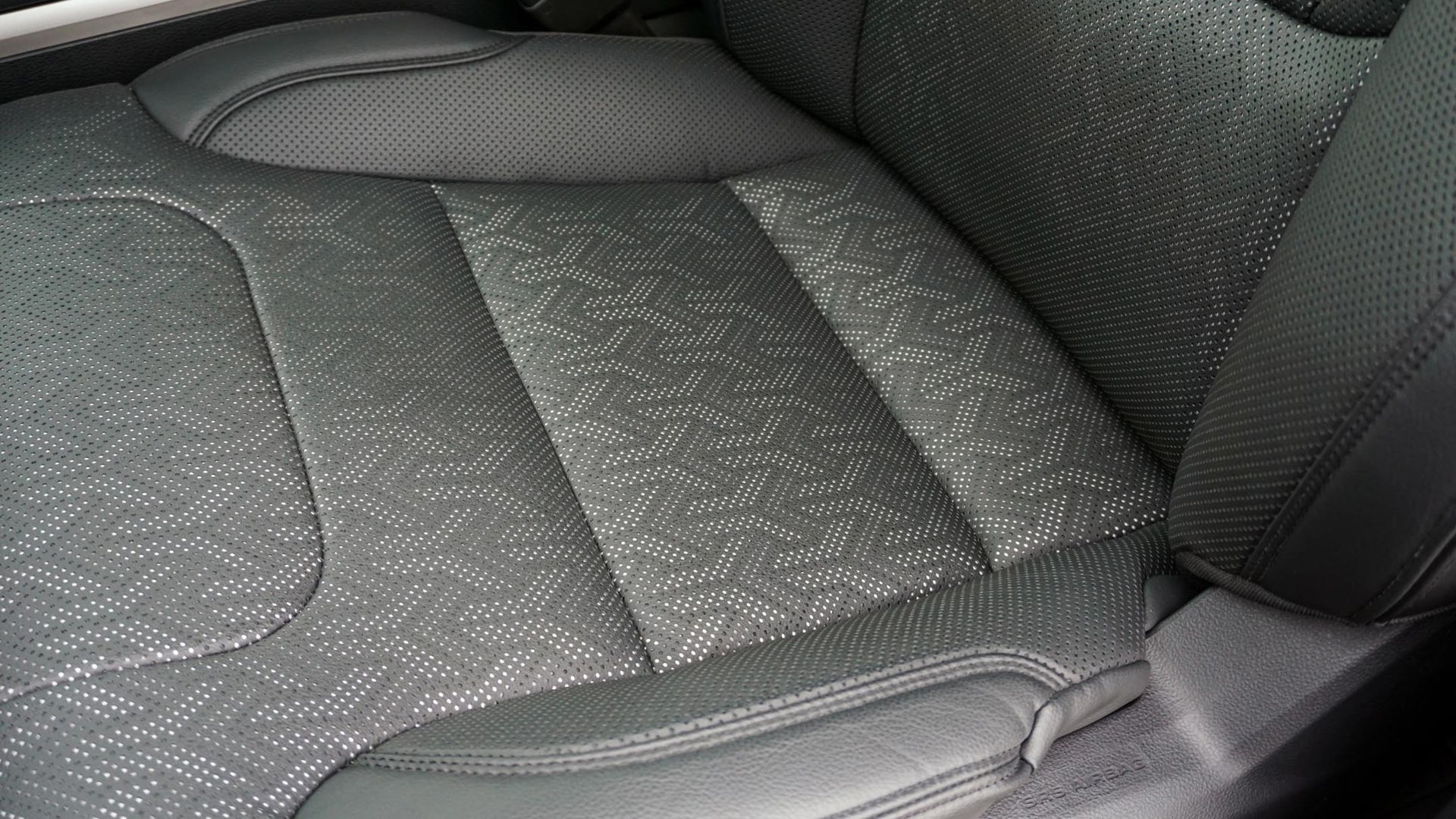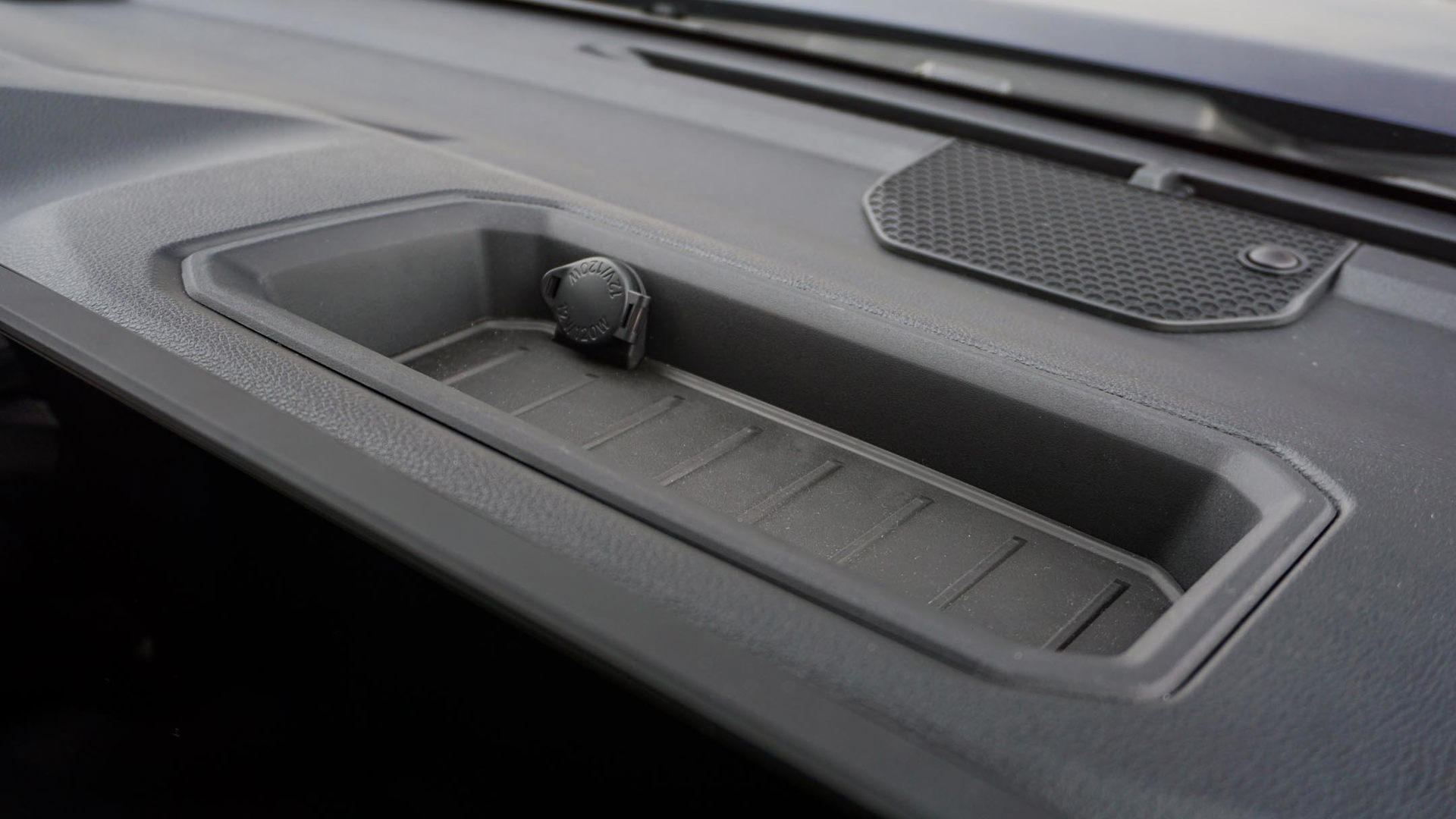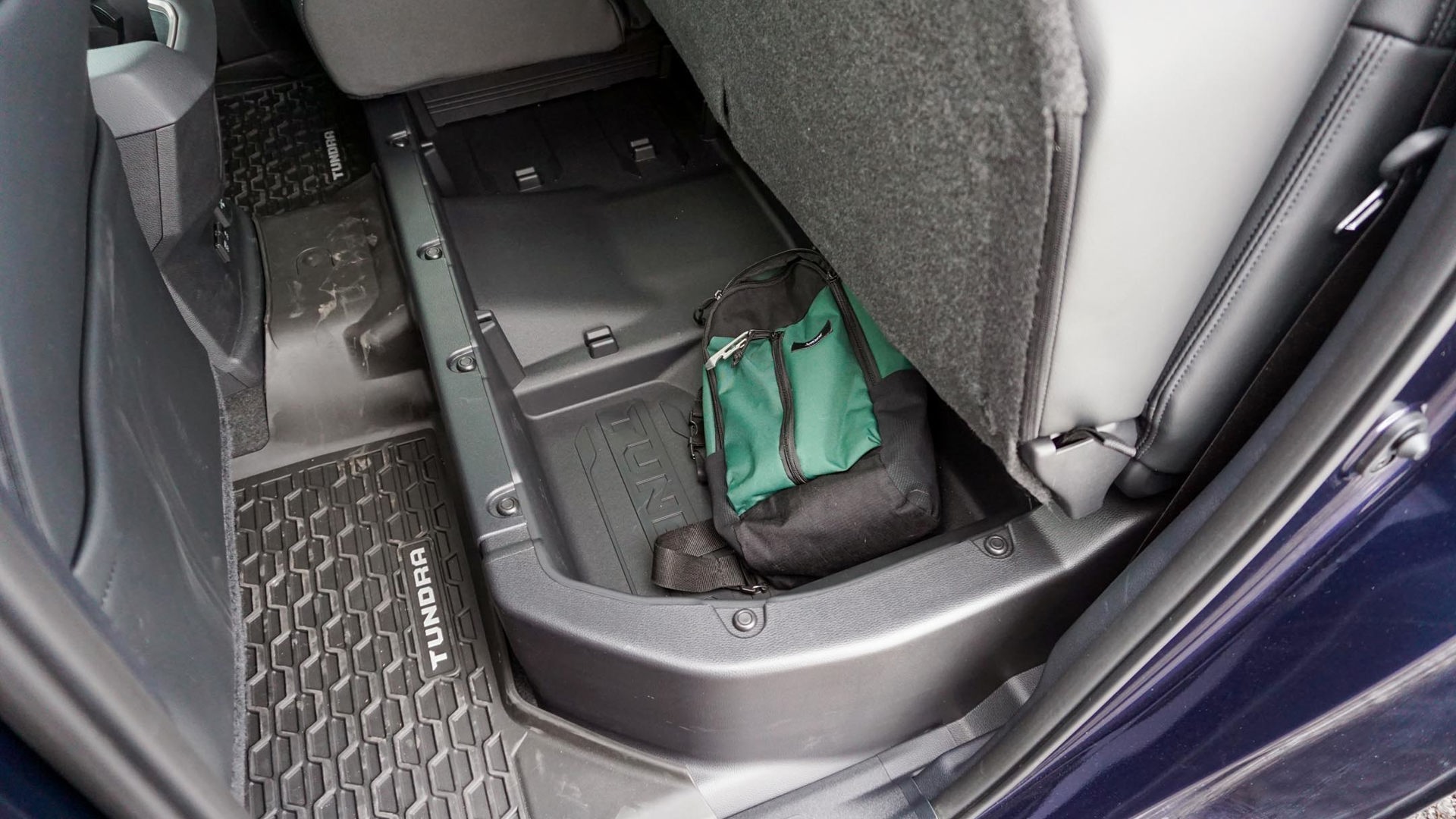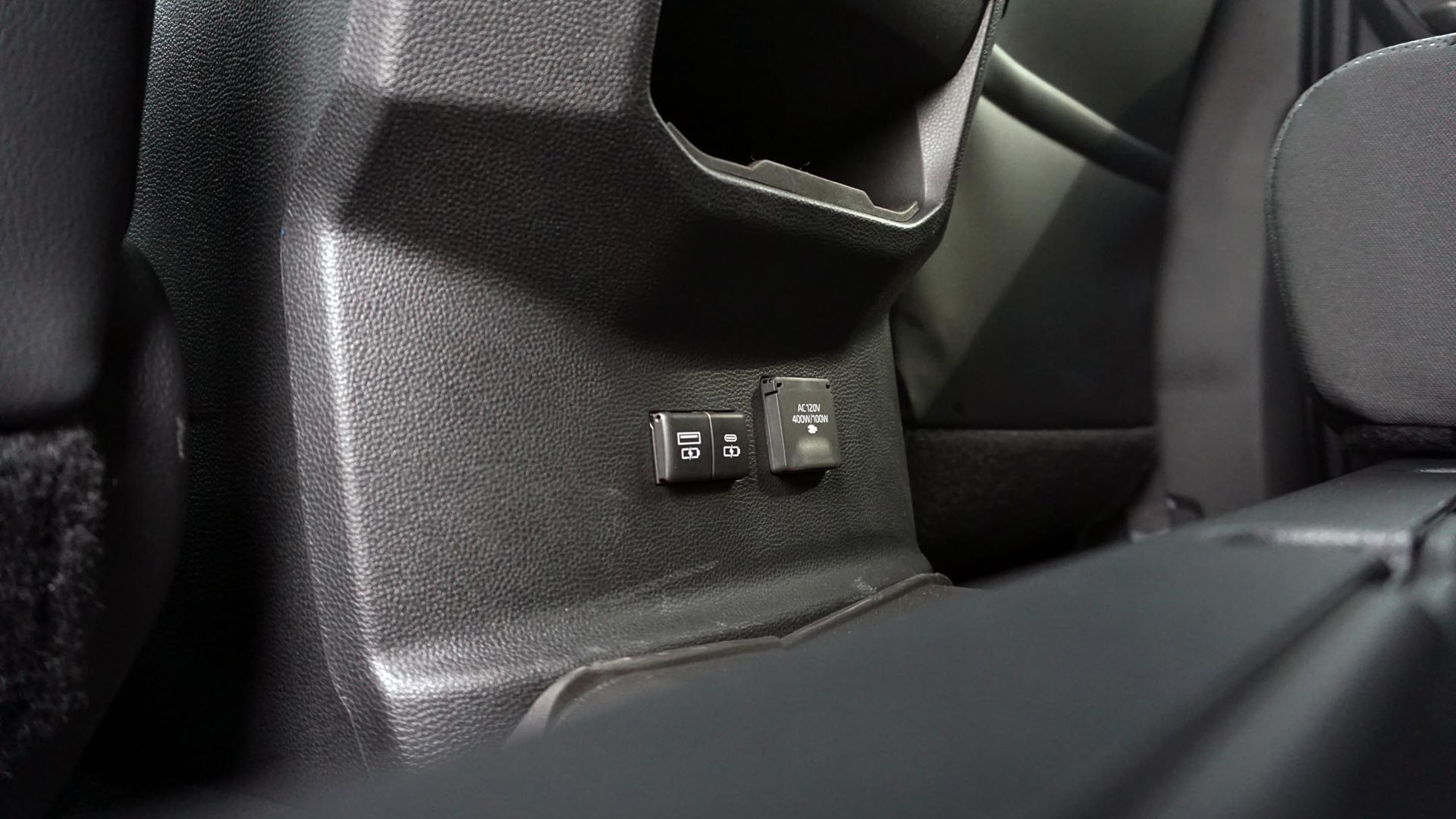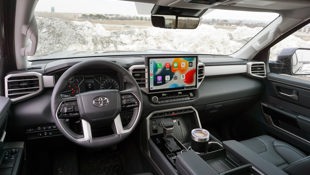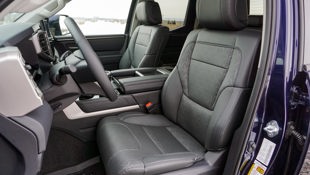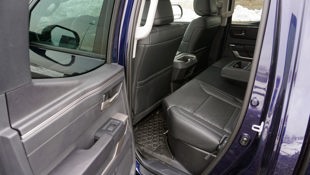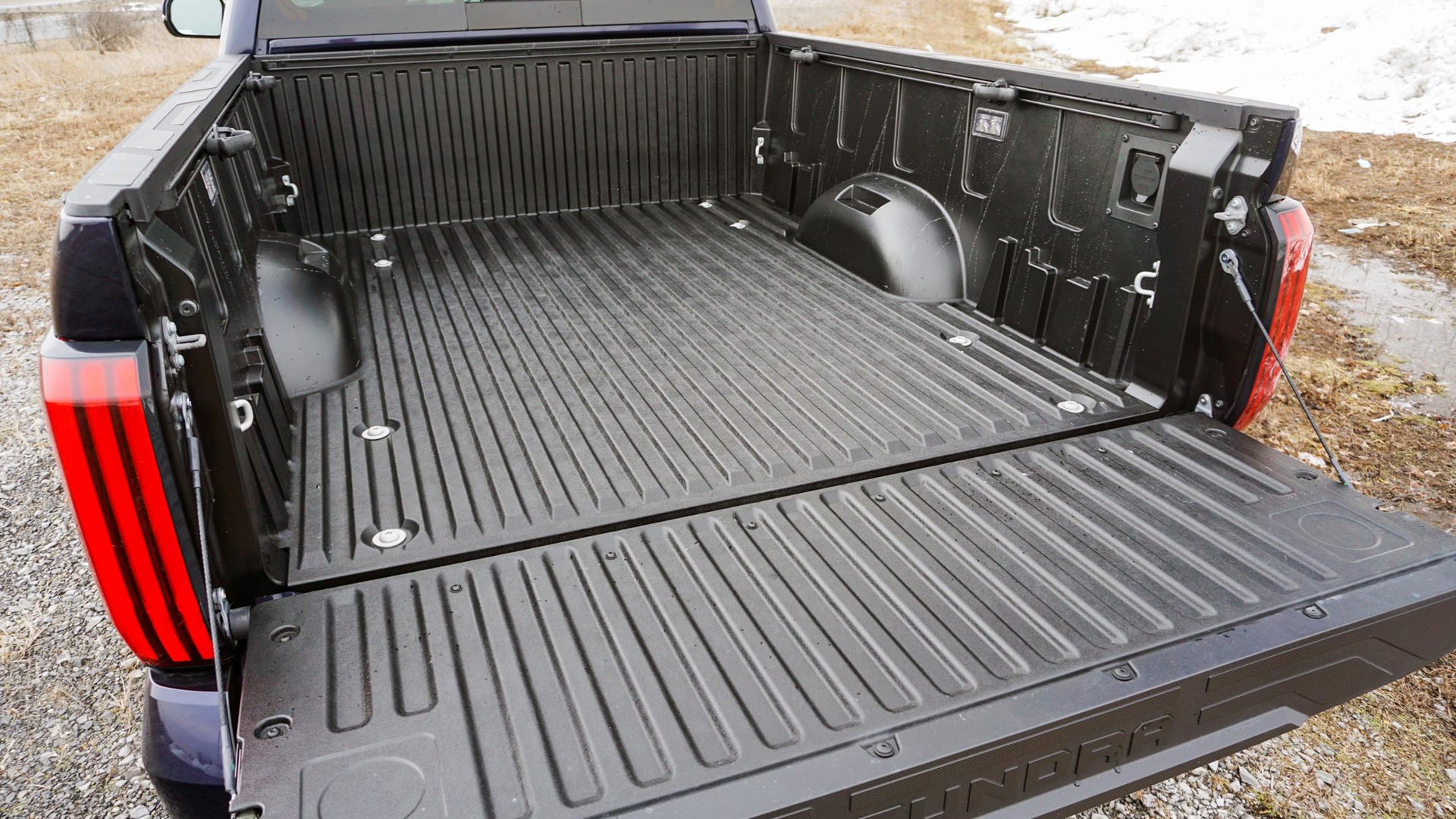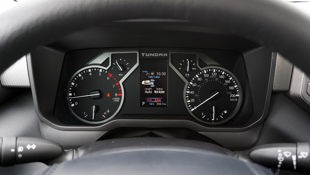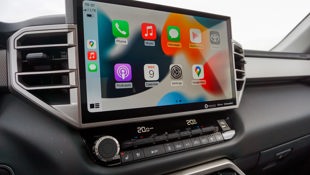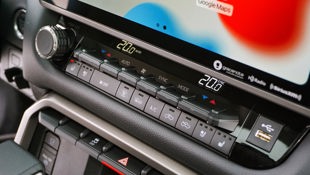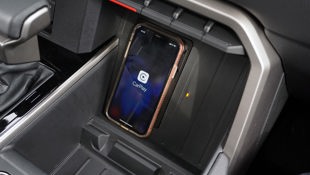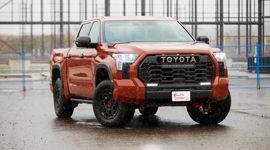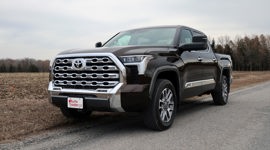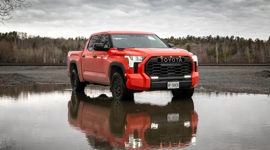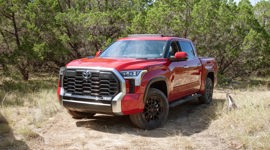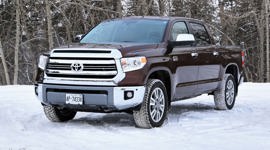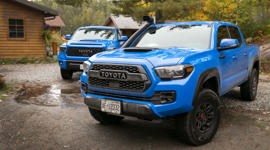 AutoTrader SCORE
AutoTrader SCORE
-
STYLING8/10
-
Safety9/10
-
PRACTICALITY8/10
-
USER-FRIENDLINESS10/10
-
FEATURES9/10
-
POWER10/10
-
COMFORT6/10
-
DRIVING FEEL7/10
-
FUEL ECONOMY6/10
-
VALUE8/10
It’s taken longer than it should, but it feels like the 2022 Toyota Tundra is back to being the type of truck it was always meant to be.
With brand loyalty being what it is in the half-ton segment, the Tundra was never going to compete with its American adversaries on the basis of size and brute strength anyway. Instead, this third-generation version is the right kind of different, with a focus on standout styling and streamlined powertrains, and a whole whack of user-friendliness added for good measure.
The 2022 Tundra might not appeal to the typical truck buyer, but its execution is unquestionably among the best in the segment at the moment.
Styling: 8/10
Two words: gargantuan grille. Like it or not, it’s hard to look away from the redesigned Tundra’s massive mug. To describe this truck as totally different than before is a gross understatement, and there’s absolutely nothing shared between them. In a modern market that demands every half-ton look muscular, this Toyota is certainly that.
The cabin is unquestionably part of today’s Toyota family – not that it looks like anything else in the lineup, but rather because form follows function in a way that this brand has recently prioritized. It’s stylish, that much is for sure; but practicality precedes all else, with cubbies and shelves part of the very design instead of being added after the fact.
Comfort: 6/10
As per truck tradition, the Tundra is still built on a ladder frame – far from problematic but certainly obvious from inside, with uneven surfaces jostling this half-ton in a familiar way. What’s different, however, is how the suspension handles itself in such situations, with a new-for-2022 coil spring setup in the back that’s intended to better suppress unruly behaviour. And while it works most of the time, there’s still a propensity to pitch forward and back on precast concrete highways – a rather unflattering trait that betrays the otherwise agreeable nature of the drive.
It wouldn’t be fair to describe the ride quality as uncomfortable, but it’s not able to absorb road imperfections like some of its rivals – namely the Ram 1500 and its optional air suspension. Likewise, the driver’s seat isn’t quite as comfortable as some others out there, with some upper leg cramps setting in after four hours behind the wheel.
Power: 10/10
Moving away from what’s customary in this segment, V8 power is no longer offered here, with a pair of six-cylinder options to pick from instead. Every trim now employs a twin-turbocharged 3.5L V6 that, in the case of this Limited, generates a hearty 389 hp and 479 lb-ft of torque. That’s more than the old truck’s eight-cylinder – although just barely, in terms of horsepower – and enough to make the big displacement days of old nothing but a distant memory.
For those in need of more output, a hybrid option is on its way that uses the same six-cylinder engine but adds a small electric motor to the proceedings, resulting in totals of 437 hp and 583 lb-ft of torque. For the sake of comparison, the only other hybrid half-ton on the market, the gas-electric Ford F-150, makes 430 hp and 570 lb-ft of torque.
Driving Feel: 7/10
When equipped with the non-hybrid engine, as was this tester, the Tundra feels as forceful as any other half-ton out there. It’s only ever audibly that it comes up short of the burly V8 of old, with generous pedal play accompanied by a slightly gruff sound high in the rev range.
The reward is enthusiastic acceleration when it’s asked for, the turbos spooling up in a hurry for a full serving of torque that’s useful when passing, merging, towing, or hauling. With peak torque kicking in as low as it does – 2,000 rpm in SR models; 2,400 rpm elsewhere in the lineup – and the 10-speed automatic transmission reacting quickly to throttle input by downshifting to spike the revs, there’s an appreciable perkiness to this powertrain.
Like the stuff that gets the wheels spinning, the steering has been thoroughly modernized, with Toyota ditching the hydraulic system of old for electrically power-assisted rack-and-pinion setup. That it’s artificial is obvious, with not much feel to report. On the bright side, the resistance that’s been dialled in requires the right amount of effort to change direction, while there’s virtually no play on-centre – even at highway speeds. The brakes, meanwhile, deliver reassuring responsiveness with nicely tailored pedal pressure.
Fuel Economy: 6/10
Despite its reduced displacement and cylinder count, the Tundra delivers typical half-ton fuel consumption, with a combined rating of 12.2 L/100 km. While that’s substantially better than the positively nauseating 16.3 L/100 km the old eight-cylinder was officially good for, it’s about the same as the V8-powered Ram 1500 and its available mild hybrid system – at least on paper.
An initial evaluation drive spanning some 240 km of highway, city, and rural roads came in at 13.2 L/100 km – this despite the truck running in rear-wheel drive the entire time. Meanwhile, with the vast majority of the entire week-long test spent powering only the rear wheels, the final tally registered at 14.4 L/100 km over the course of approximately 600 km.
Practicality: 8/10
That also serves to highlight another of the third-gen Tundra’s few disappointments: there is no automatic setting for the four-wheel drive system. While all of its rivals that round out the half-ton segment feature on-demand settings in addition to the usual high- and low-range gearing, Toyota decided against including the former in this entirely new truck. That means having to manually select four-high when conditions call for it. Of course, it’s not exactly a deal-breaker, but it’s certainly a competitive disadvantage.
Otherwise, its makeup is exactly as it should be, with the choice of three bed sizes – 5-foot-5, 6-foot-5, and 8-foot-1, depending on cab configuration – and class-competitive payload and towing capacities. The former ranges from 674 to 880 kg (1,485 to 1,940 lb), while the latter is anywhere from 3,765 to 5,443 kg (8,300 to 12,000 lb). There are, however, plenty of stops in between, and careful attention should be paid when shopping for this or any other truck before signing on the dotted line. In the case of this tester, an extended cab model with a 6-foot-5 bed bolted to the back, it’s rated to haul 826 kg (1,820 lb) and tow 5,039 kg (11,110 lb).
That it’s an extended cab rather than a full crew means it has half-doors in the back that are conventionally hinged. The space isn’t exactly generous, but it’s no worse than others in the segment with the same configuration. There’s also some under-seat storage – useful for keeping items out of sight.
User Friendliness: 10/10
The front half of the cabin is where the 2022 Tundra truly shines, and not just for the space it offers (although there’s plenty of that). Climb inside and there’s a sense of thoughtfulness to the layout, right down to the flat sills that are wide enough to comfortably function as armrests even with the windows closed. The console bin lid is flanked by a pair of similar armrests, with tiered trays in between that can open for easy access to the confines below, plus the typical hinged lid itself.
The overall sense of command and control from behind the wheel is second to none in the segment, with impressive outward views and massive door mirrors that virtually eliminate blind spots (although they generate quite a bit of wind noise above city speeds). Likewise, there’s all sorts of physical switchgear inside that’s mostly easy to operate. There are some exceptions, though, including the bank of buttons near the driver’s left knee that are obscured from view. And while there’s a massive volume knob on the centre stack, there’s no physical tuner to go with it.
Features: 9/10
In a break from Toyota tradition, the infotainment interface is incredibly responsive, robust, and easy to use – although it ushers in a new era of connectedness for the brand that requires a corresponding smartphone app and navigation subscription to unlock its full potential. No matter, though, because both Android Auto and Apple CarPlay are standard, which means Google (or Apple) Maps can be used free of charge. And best of all, the wireless connections occupy the entirety of the massive 14-inch screen that comes in Limited and Platinum trims. (Those wireless connections are standard across the lineup, with SR and SR5 models running an eight-inch touchscreen instead.)
In the case of this Tundra Limited, heated and ventilated front seats wrapped in synthetic leather are part of the package, as is a heated steering wheel, dual-zone automatic climate control, and satellite radio. Both front seats also have eight-way power adjustability, while the driver’s side gets a pair of memory settings, and the sunroof and rear window are powered. There’s also a built-in trailer brake controller, a 120-volt power outlet in the bed, adjustable tie-down cleats, a Class IV hitch with four- and seven-pin connections, and a tailgate release switch hidden in the driver’s side taillight.
Safety: 9/10
All versions of the 2022 Tundra come with automatic high-beam headlights, forward collision warning with cyclist and pedestrian detection (the latter works at night, too), automatic emergency braking, junction turn assist that can warn of oncoming traffic when making a left, lane-departure warning, lane-keeping and steering assistance, and adaptive cruise control. It’s a robust package, with this one the only truck in the segment to come with all of those features regardless of price. Moving to the Limited, meanwhile, adds blind-spot monitoring with rear cross-traffic alert.
In typical Toyota fashion, all features function as they should, although it’s noteworthy that there’s no way to disable the lane-keeping system’s steering assist; it’s always active, with two levels of intervention. And even with the closest following distance selected the adaptive cruise keeps a wide enough gap from a preceding vehicle that others can easily fit in between. But then the blind-spot monitoring extends the length of any trailer being towed, with the ability to automatically detect its length (dimensions can also be saved manually).
Value: 8/10
All the standard safety gear might well be enough to justify the price premium the cheapest Tundra commands compared to a rival F-150, with this Toyota starting at $46,880 versus the $42,294 for a cab-and-a-half Ford. Both prices include their respective delivery fees ($1,890 for the Tundra; $1,995 for the F-150).
Of course, there’s a whole host of trims and packages that go up in price from there all the way to the range-topping Platinum 1794 that’s $76,440 before tax. That’s a downright bargain compared to the F-150 or Ram 1500, both of which can easily touch six figures at the tops of their respective lineups. Granted, those trucks offer equipment that can’t be had here, like massaging seats, Wi-Fi hotspots, and head-up displays, but the price here makes for a compelling offering.
As for the Limited trim, it lands somewhere between the top and bottom of the lineup in terms of price, with this tester ringing in at $62,380 before tax. That the crew cab version is only $2,000 more seems like easy money to spend. Regardless, it’s all similar to the rest of the segment, with this version of the Tundra feeling like it’s priced fairly for all that comes with it.
The Verdict
What the 2022 Toyota Tundra feels like is exactly the right type of half-ton for most shoppers – even if unwavering brand loyalty means the vast majority wouldn’t give this truck the time of day. Its priorities are in the right places, with an approachable and user-friendly cabin that’s perfectly fine for serious truck stuff but seems better suited for the rest of the time (which is most of the time). It’s heavy on technology and yet it’s all integrated well, with the massive touchscreen in this tester far less distracting than it might seem in photos.
After a generation spent imitating rivals from Ram, Ford, and General Motors (GM), the Tundra is back to being Toyota’s version of a half-ton – and that’s good. It also makes its few foibles a little more forgivable, although its relative inefficiency is disappointing, as is the lack of an automatic four-wheel drive setting. Otherwise, this third-gen truck delivers an experience that’s different enough from the competition to stand out while feeling sufficiently competitive – and competitively priced – to keep up.
| Engine Displacement | 3.5L |
|---|---|
| Engine Cylinders | Turbo V6 |
| Peak Horsepower | 389 hp @ 5,200 rpm |
| Peak Torque | 479 lb-ft @ 2,400 rpm |
| Fuel Economy | 13.5/10.6/12.2 L/100 km cty/hwy/cmb |
| Cargo Space | N/A |
| Model Tested | 2022 Toyota Tundra Double Cab Limited |
| Base Price | $60,490 |
| A/C Tax | $100 |
| Destination Fee | $1,890 |
| Price as Tested | $62,480 |
|
Optional Equipment
None
|
|
